32 weird and unusual animals you've never heard of but will be totally intrigued by
From the weird to the wonderful, here's our roundup of animals you've never heard of before (and certainly won't forget in a hurry!)
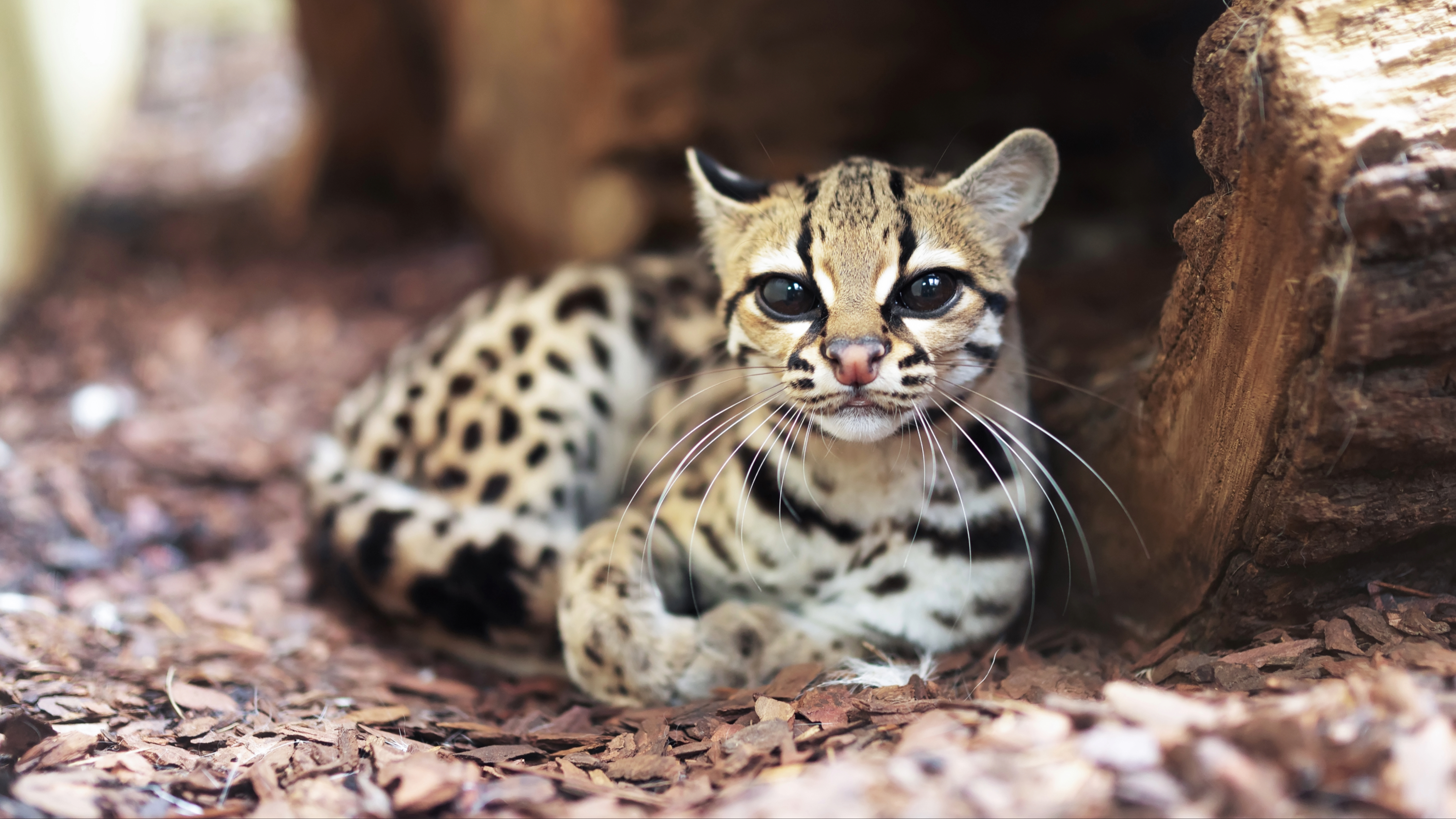
With an estimated 8.75 million living species on earth, there are always going to be some weird and unusual animals you've never heard of.
From the friendly-faced axolotl who's one of the most unusual pets to the striking pink dolphin who lives in the Amazon river basin in South America, this list has plenty to blow your mind and keep you entertained.
Whether you like land or sea animals, mammals or reptiles, you're sure to make a new friend or two as we reveal the weird and unusual creatures you never knew existed, until now...
32 weird and unusual animals you've never heard of
1. Irrawaddy dolphin

Loved for their adorable happy faces that look like they're permanently wearing a smile, the gentle, playful, and social Irrawaddy dolphin is named after the river it's endemic to – the Irrawaddy River in Myanmar.
Found throughout South and Southeast Asia, this gorgeous creature is critically endangered because they often find themselves caught in fishing nets. Peaceful and fun-loving, the Irrawaddy dolphin can often be found blowing bubbles, waving, and slapping the water with their tail and flippers.
2. Lowland streaked tenrec
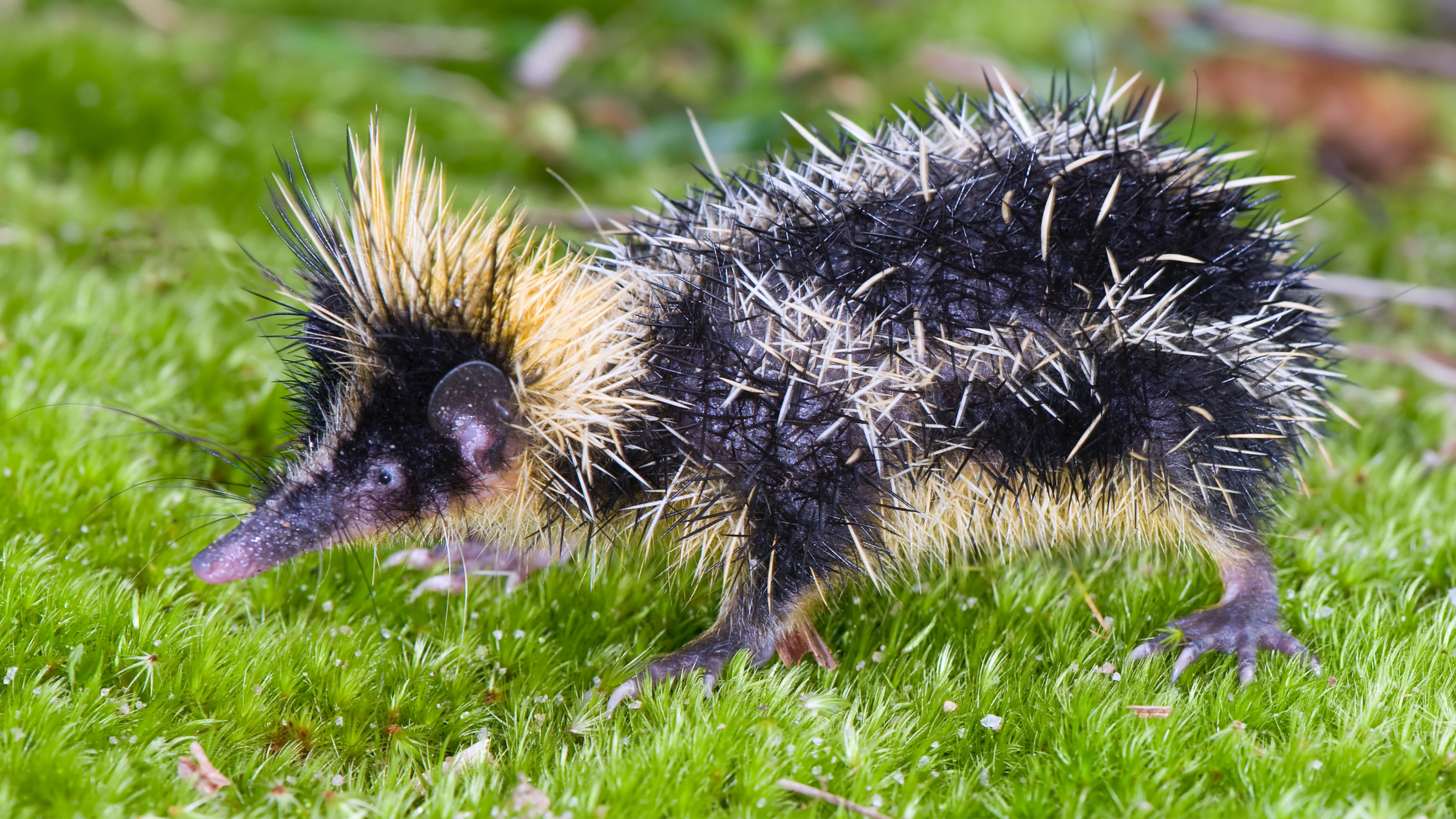
Looking rather comically like a bedraggled bumblebee, the lowland-streaked tenrec is a small, insectivorous mammal from Madagascar. Featuring a long, black nose and a black-colored coat that sports yellow stripes and a bright yellow spine crest that they use to defend themselves against predators, this cute creature lives in family units of up to 20 animals. They primarily feast on earthworms and other insects and they communicate through a variety of tongue-clicking sounds to ward off predators.
3. Saiga antelope
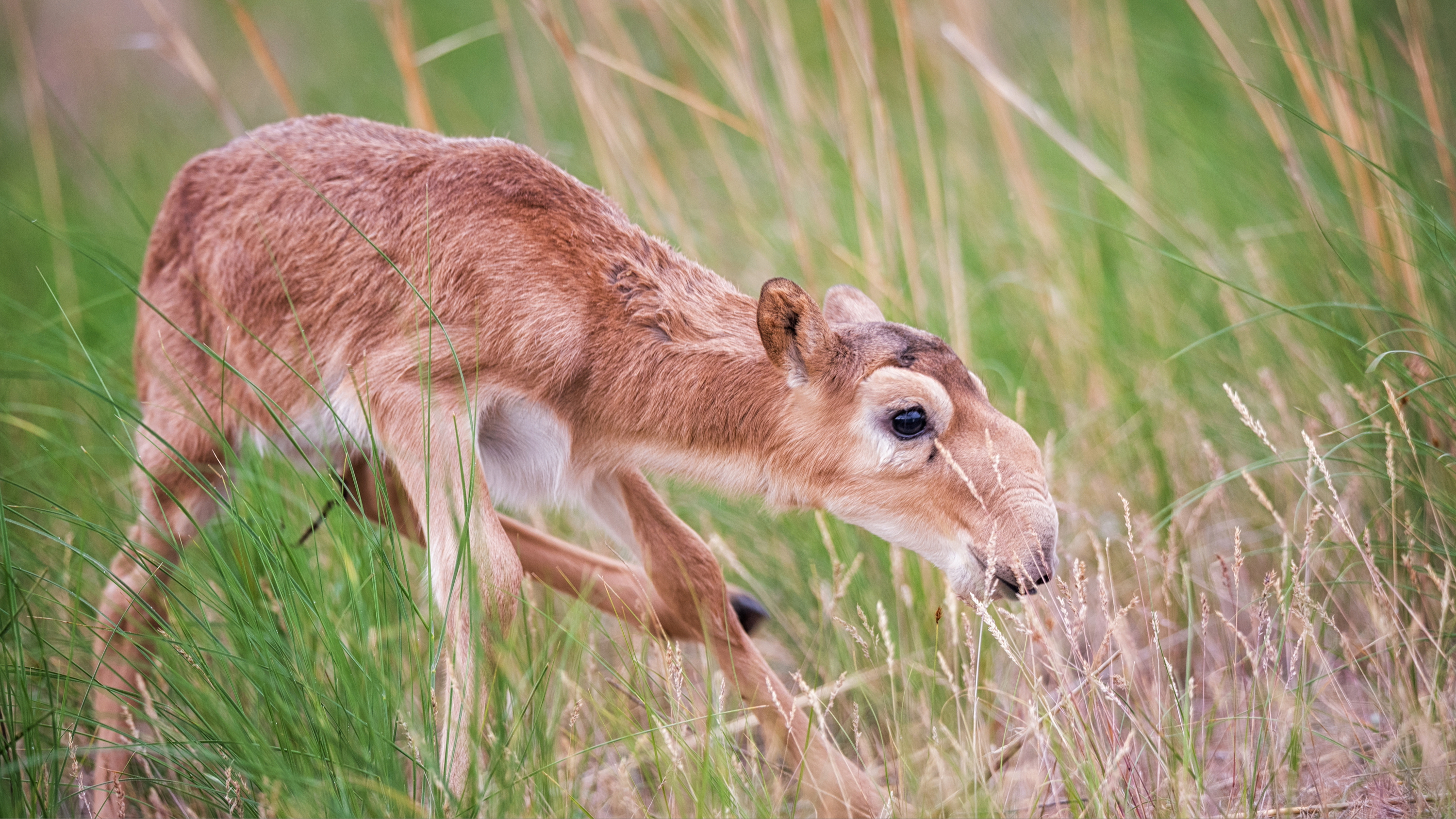
With its large, bulbous nose and stooping body, the timid saiga antelope is about the size of a goat and has a light, buff-colored coat that becomes thick and white in the winter. Dating back as far as the last ice age, the saiga antelope is a migratory herbivore found in Kazakhstan, Mongolia, the Russian Federation, Turkmenistan, and Uzbekistan where they live in semi-arid desserts and open grasslands. In the last few decades, the global population has fallen by 95% due to human hunting (their horns are highly prized in Chinese medicine) and destruction of their natural habitats.
Get the best advice, tips and top tech for your beloved Pets
4. Common potoo
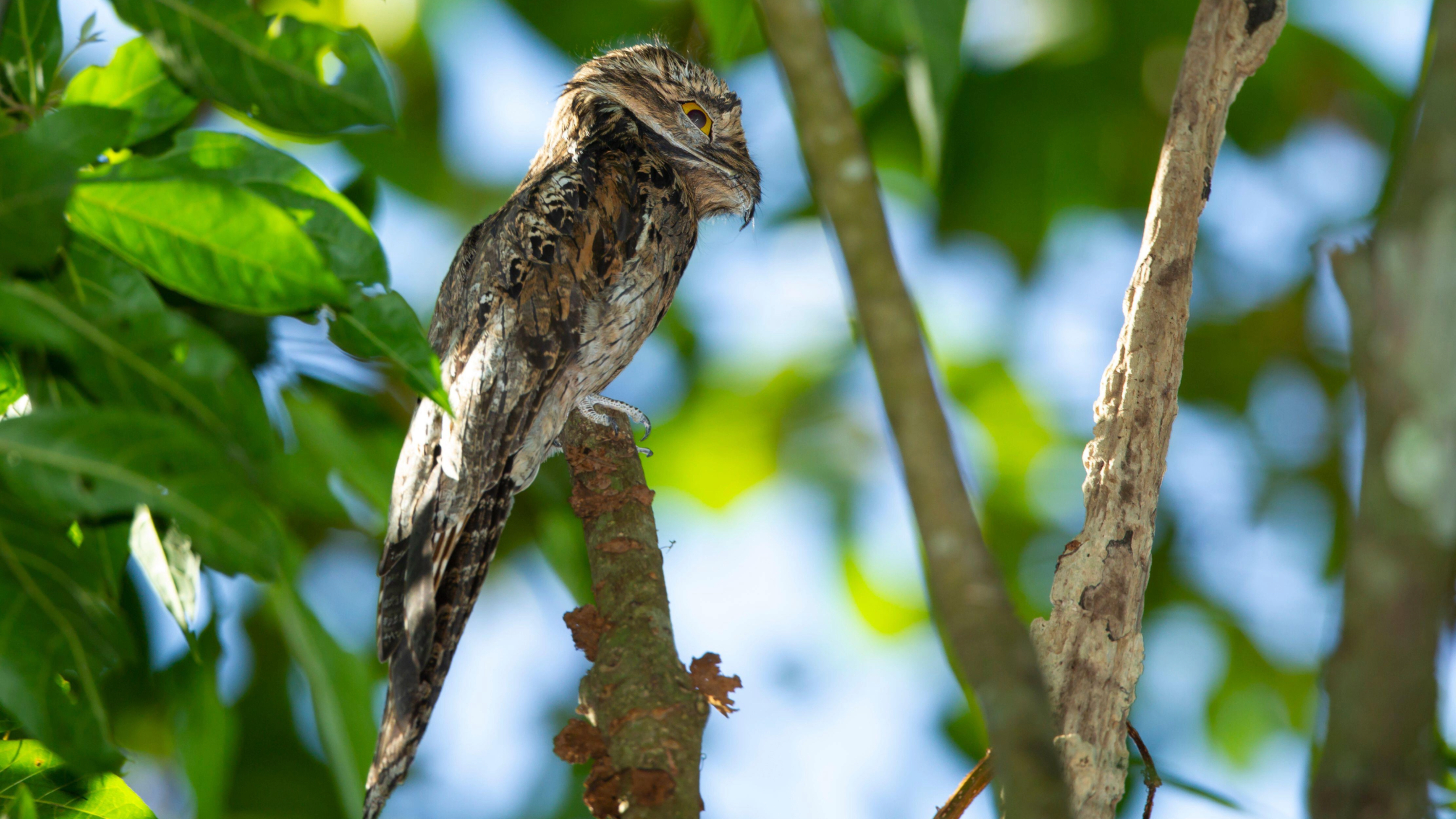
Found in large numbers throughout southern Central America and throughout the lowlands of northern and central South America, the common patoo has a small, hooked bill with a wide gape that it uses to sweep up insects after dark. During the day, this nocturnal bird sleeps upright in trees and has an incredible ability to remain completely still for hours at a time. Beautifully camouflaged by the way its plumage blends into its surroundings, the common patoo has slits in its upper eyelids that allow it to keep watch for threats while still keeping their large eyes closed.
5. Florida Softshell Turtle
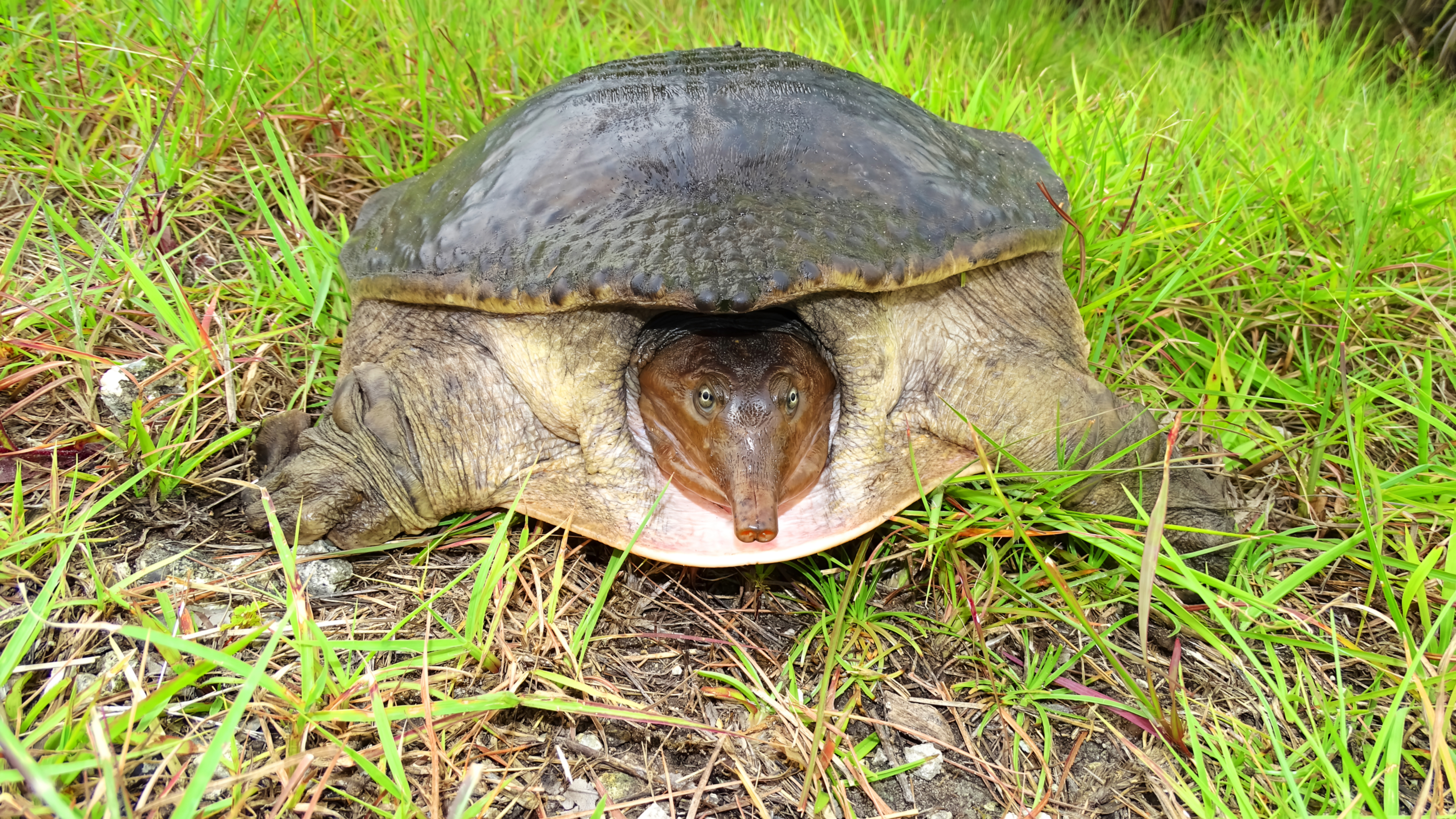
Native to the southeastern United States, the Florida Softshell Turtle spends most of its time in the water but if you're lucky, you may well spot one basking on a log or along the shoreline. They're primarily carnivores, feeding on snails and fish, and they have been known to be aggressive when they feel threatened. Nesting season is between March and July, during which time females may nest four to six times in one season, laying over 200 eggs annually.
6. Star-nosed mole
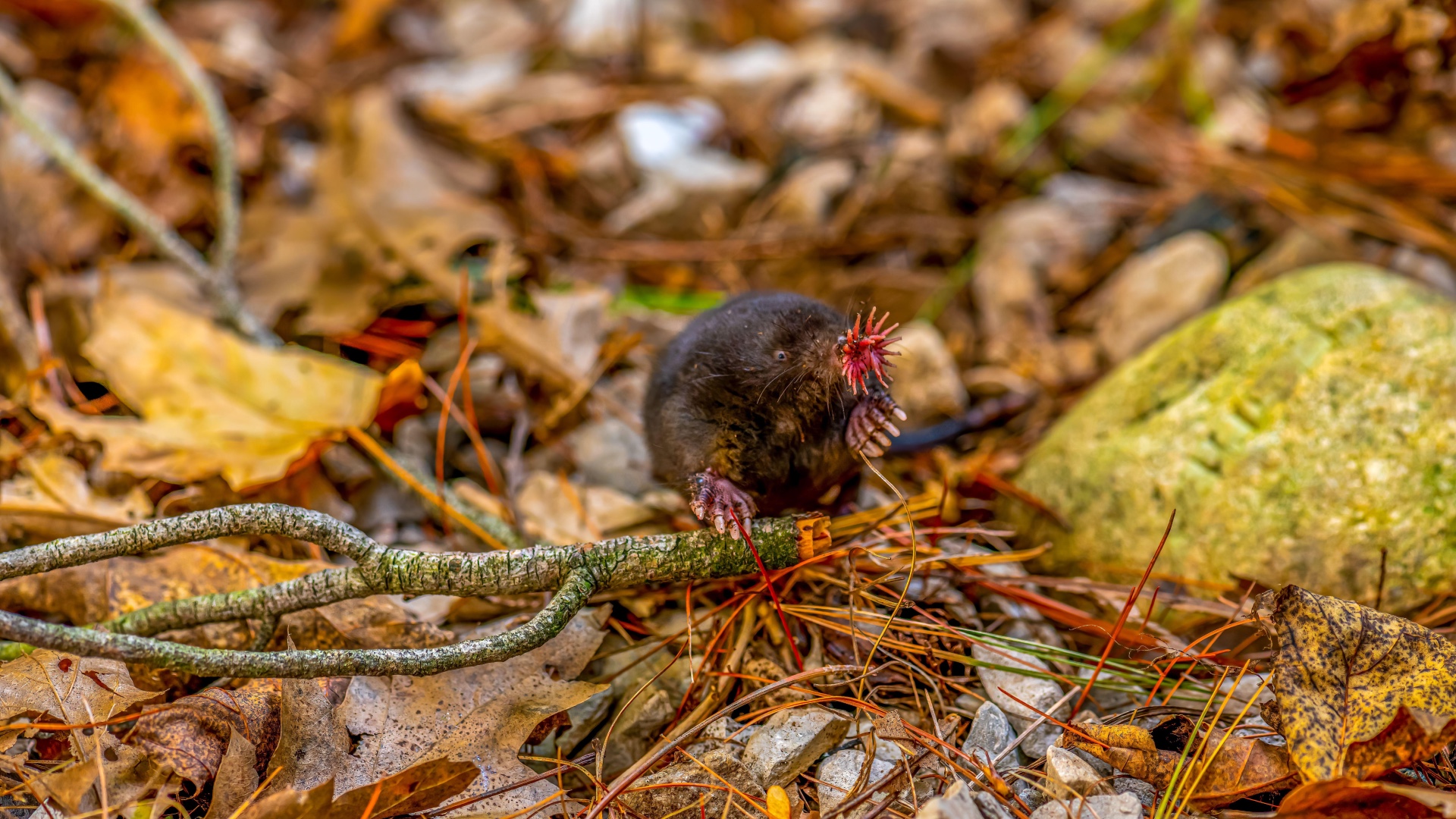
Found in the northeastern parts of North America, the remarkable star-nosed mole got its name from the rose-colored ring of fleshy, retractable tentacles surrounding its nose. Averaging around 7.6 inches in length and weighing just 1.8 ounces, the star-nosed mole likes to live in damp soil and is known for its gregarious nature. While little is known about this species, scientists believe they are colonial, meaning they live in pairs or groups.
7. Horsfield's tarsier
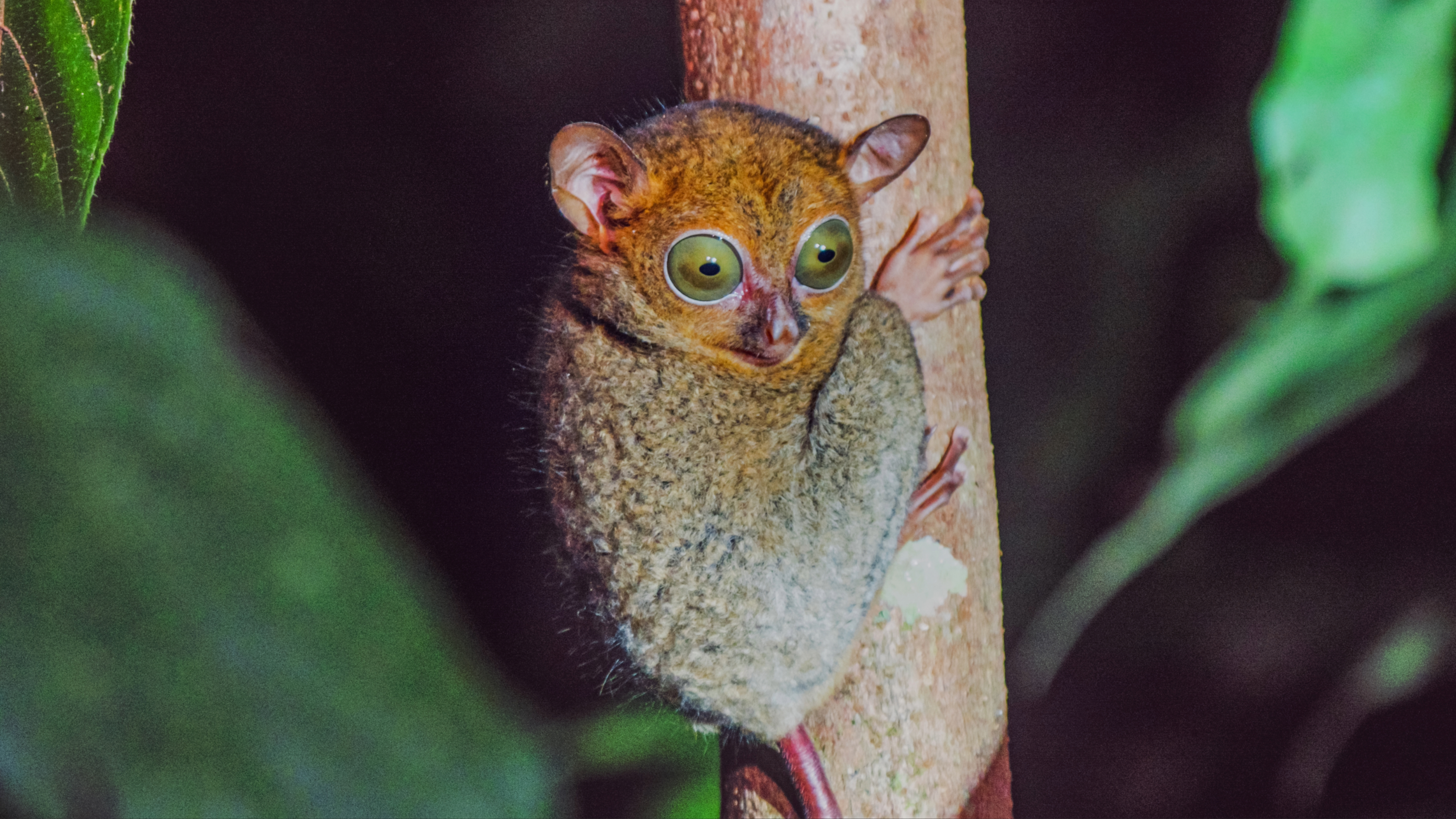
The horsfield's tarsier lives in the forests of Borneo, Sumatra, and neighboring islands. A vertical climber and leaper, it's characterized by its strikingly large eyes – which are larger than any other mammal when compared to the relative body size. Small creatures that average just under five inches in. length, the horsfield's tarsier has a tail that's nearly twice as long as its head and body. Solitary, nocturnal animals who live and hunt alone, females have an astonishingly long pregnancy period for their size – carrying their babies for around 180 days and nursing them until they reach nine weeks.
8. Pink fairy armadillo

A nocturnal creature hailing from central Argentina, the pink fairy armadillo is quite a sight to behold! The smallest armadillo species in the world, measuring up to six inches, it spends most of its life underground, so you'll need bucketloads of patience if you're hoping to spot one in your lifetime. Sightings are rare, but when scientists have been lucky enough to glimpse them, they are always alone, leading researchers to believe they're a solitary species.
9. Aardwolf
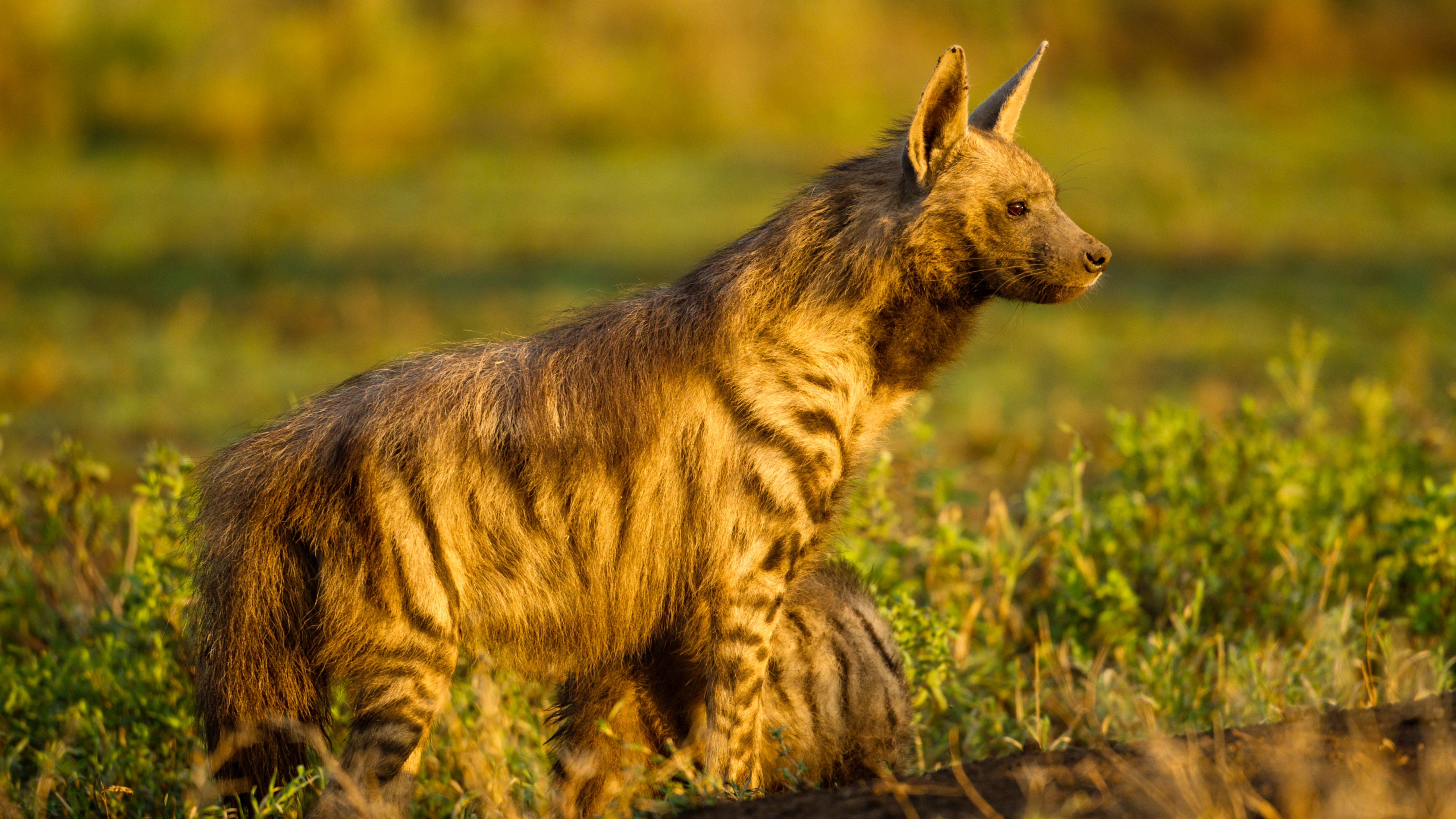
Meaning 'earth wolf' in Afrikaans, the aardwolf is a species native to East and Southern Africa. One of four hyena species, they have an average lifespan of seven years and weigh around 30 pounds. Nocturnal mammals that reside in dry, open savannahs and raise their young in underground dens, the aardwolf is a carnivore but actually prefers insects to large prey. As a species, their population is thriving even though females only go into estrus once a year and give birth to just one to four cubs.
10. Chinese Water Deer
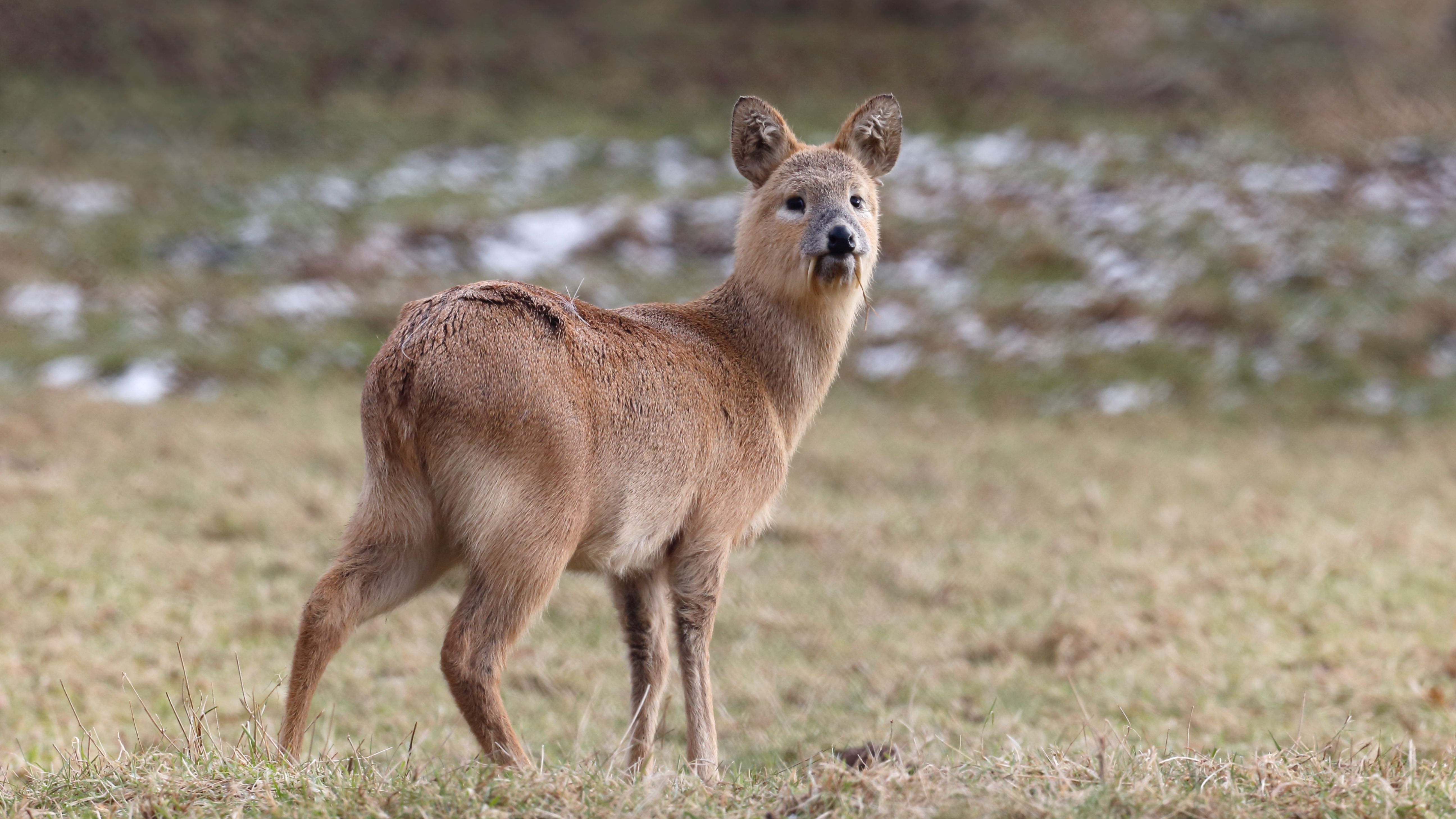
The sweet-faced Chinese Water Deer is a small deer species native to Korea and China. While they don't have antlers, they do have very prominent tusks and they use these as weapons in much the same way that other deer would use their antlers. Solitary animals, except for when they're mating, the Chinese Water Deer are active throughout the day and night, with their peak time activity time being around dusk. Herbivores, eat coarse grasses, vegetables, and reeds, and they can swim for several kilometers in search of food.
11. Long-wattled umbrellabird
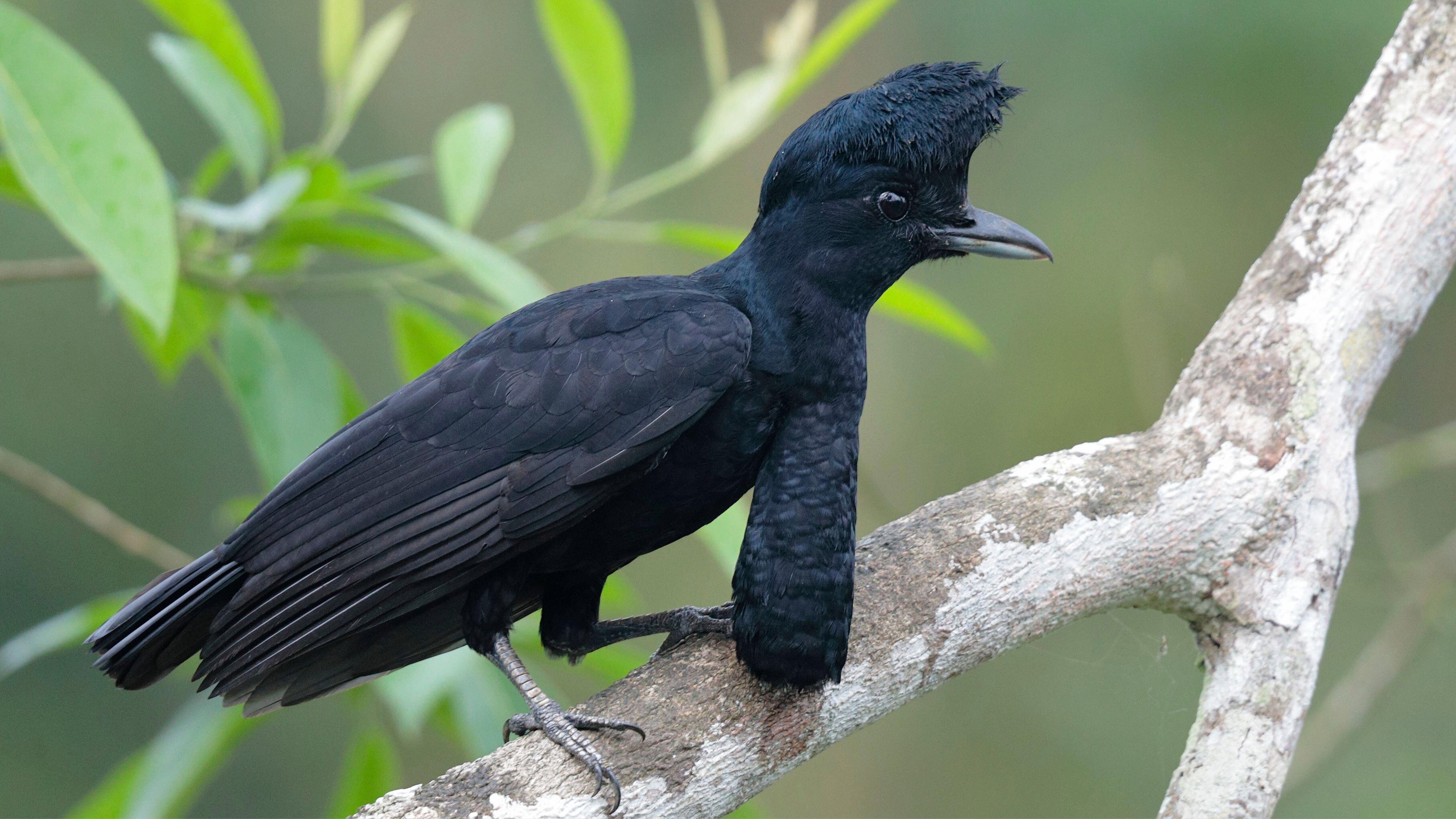
A spectacular bird with a bushy crest that resembles the hood of an umbrella, the long-wattled umbrellabird lives in the wet and humid forests of Colombia and Ecuador. An unusual-looking species that also sports an inflatable wattle that dangles from the middle of its chest, the long-wattled umbrellabird is a species under threat thanks to logging, mining, and other human practices that are destroying its habitat. Known for their boisterous and flamboyant nature, males in particular put on elaborate displays to woo their chosen females.
12. Markhor
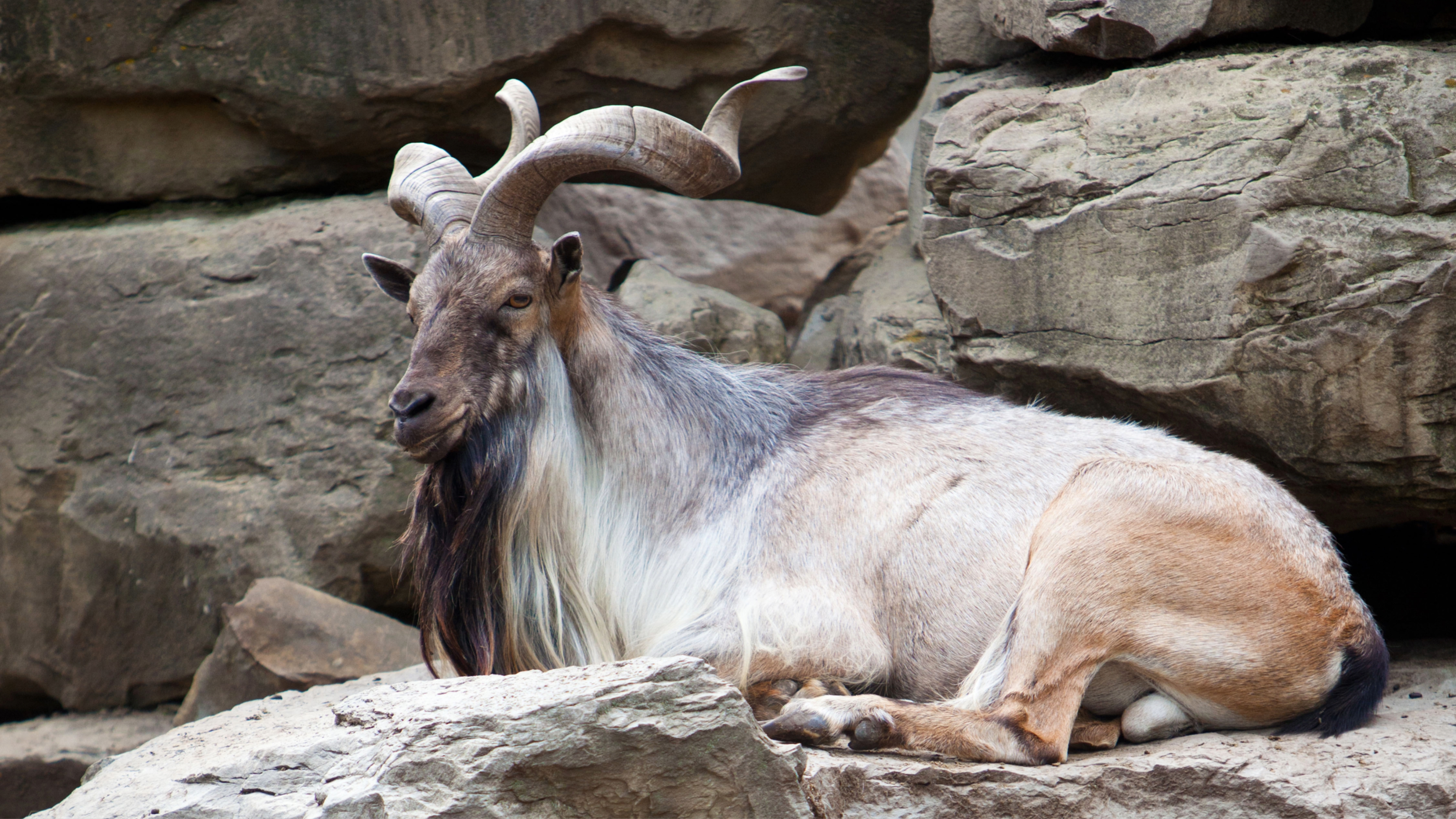
The national animal of Pakistan, the markhor has earned the nickname the 'screw-horned goat' thanks to its rather impressive spiral horns. The largest of the wild goat species, they are native to the mountains of the Hindu Kush where it's believed that just 2,500 remain. Mainly active at dawn and dusk, females and their young live in herds of around nine while males are largely solitary.
13. Racoon dog
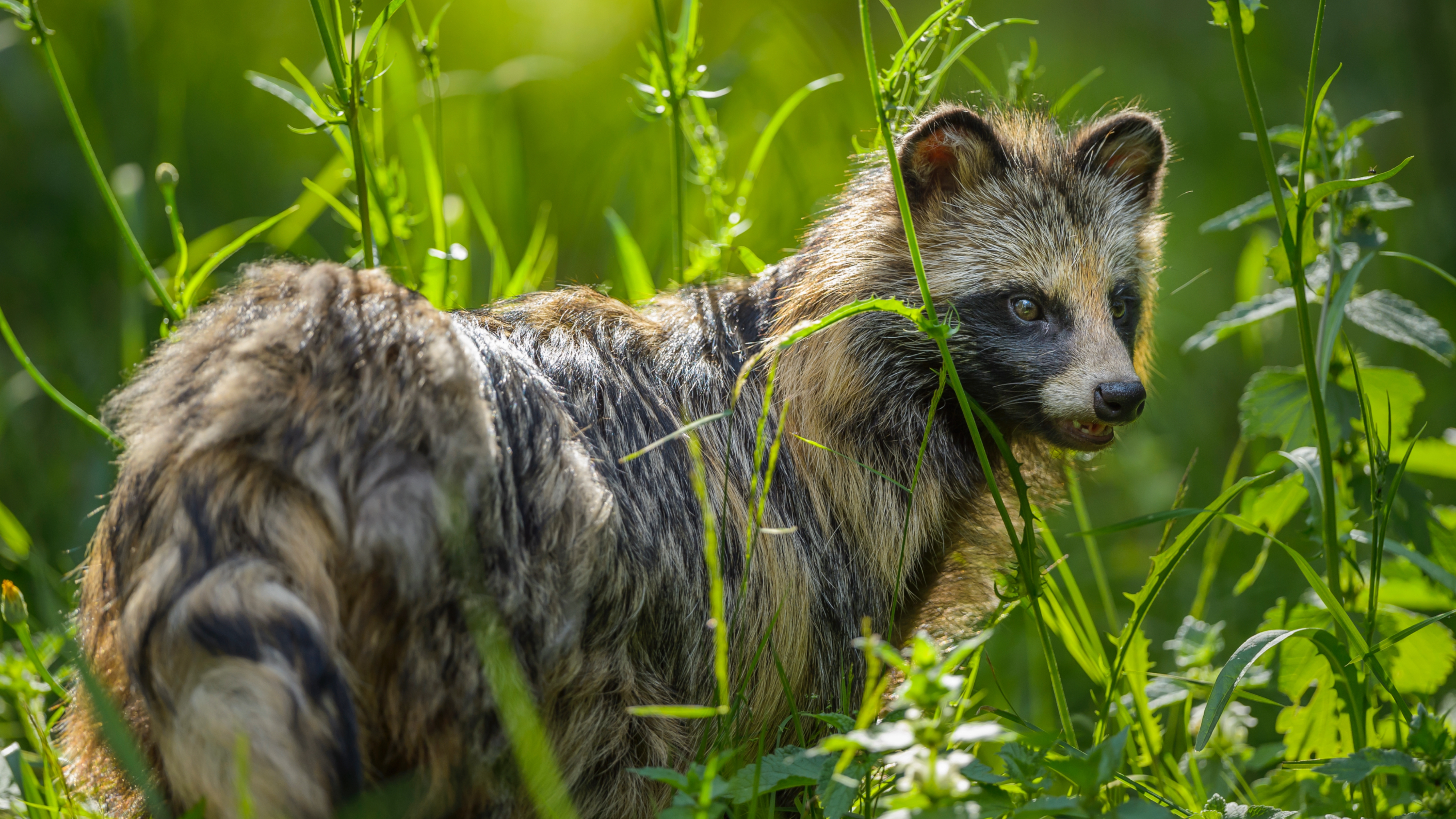
The only canine who hibernates, the racoon dog lives in Europe and Asia and although they look strikingly similar to racoons, they're not related to them. Social animals that live in pairs or small groups, racoon dogs are omnivores who are most active at night. Weighing between nine and 20 pounds and with a lifespan of six to 11 years, they live in areas of thick vegetation where they can hide and blend in with their environment.
14. Quoll

Native to Australia and New Guinea, the quoll is a tree-climbing, den-dwelling marsupial with a pink nose and white-spotted fur that's oh-so-soft. Sleeping in their dens during the day and hunting at night, these opportunistic carnivores will eat anything and everything as long as it's meat-based. Quolls have a very short lifespan – most reproduction occurs in the first year of their life and most will sadly die after their first mating season.
15. Margay
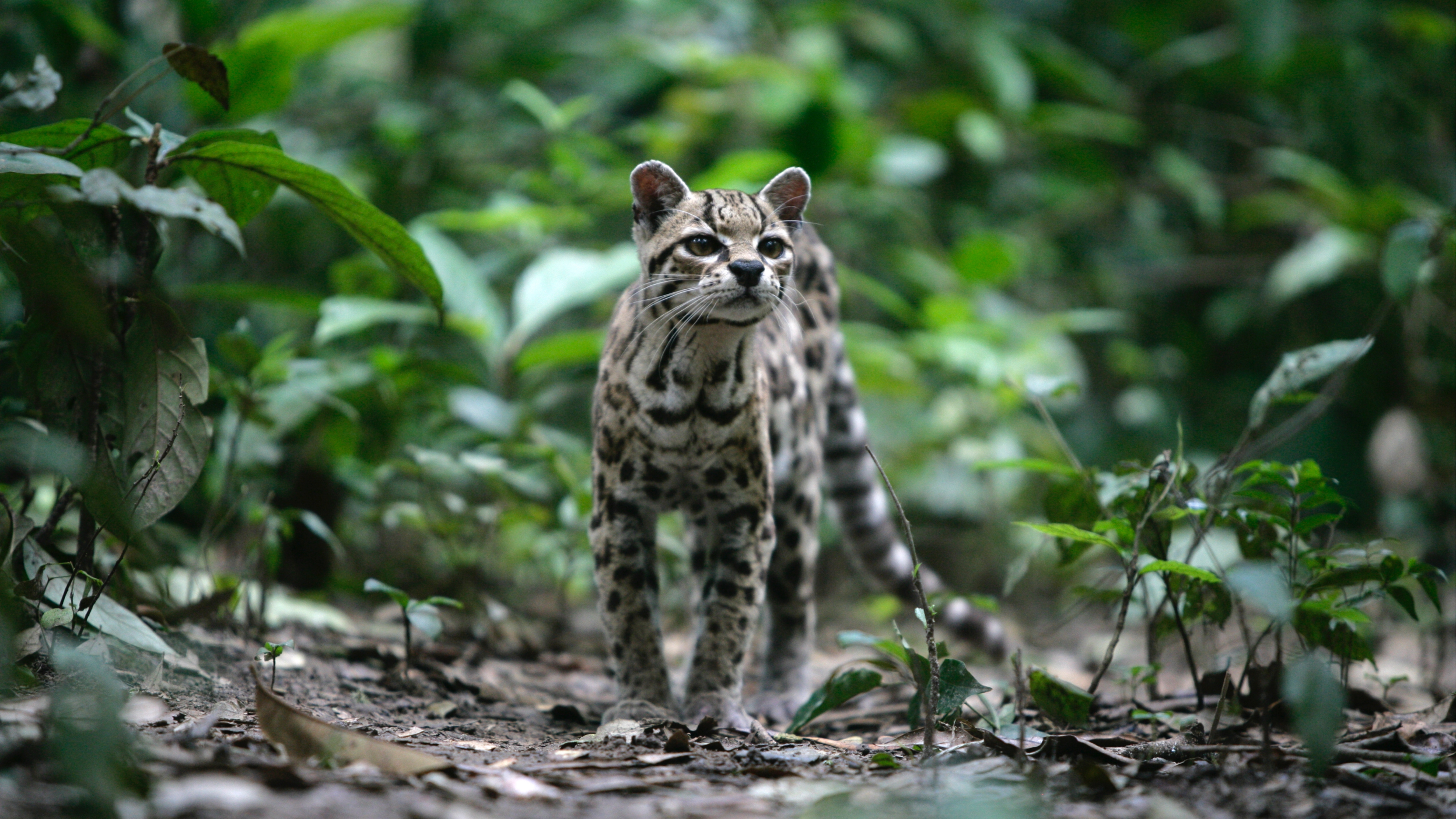
A small wild cat native to Mexico, Central and South America, the solitary and nocturnal margay has a beautiful spotted coat and a mysterious nature. Living predominantly in tropical and subtropical forests, margay's hunt mostly on the ground but they are also outstanding tree climbers.
Females give birth to one kitten once a year and while their lifespan in the wild is shorter, they've been known to live for up to 20 years in captivity. Following a period of hunting and exploitation, the margay is now a fully protected species.
16. Sunda flying lemur
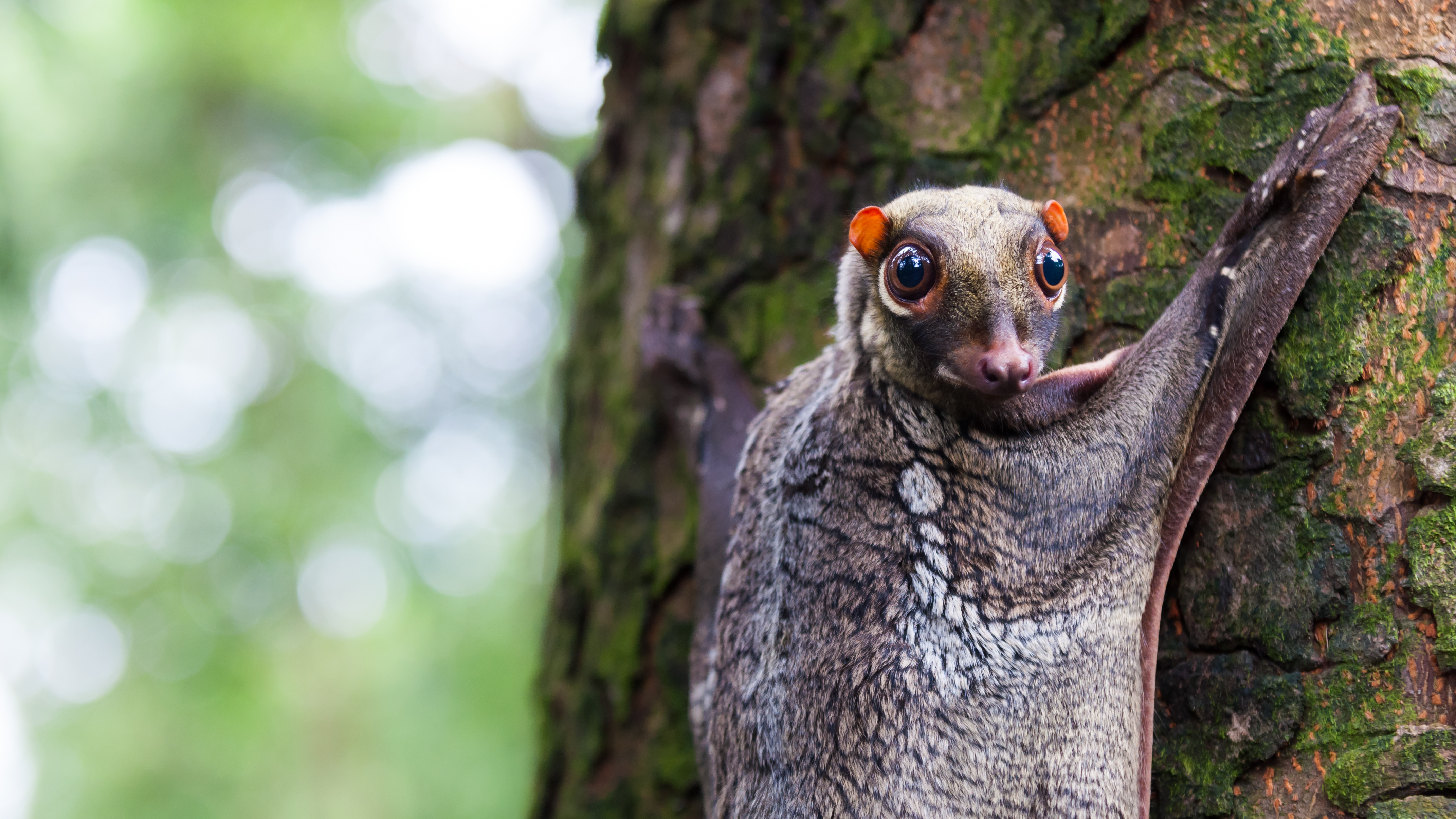
Is it a bird? Is it a plane? No, it's the sunda flying lemur! Found throughout Southeast Asia, the sunda flying lemur doesn't fly as such but rather glides between the trees. Helpless when on the ground but very skilled when climbing, this little creature has webbed feet shaped like suction cups and strong claws that help them grip onto tree trunks. The sunda flying lemur depends on trees for food and safety, so deforestation is the main threat to their survival.
17. Baluchistan pygmy jerboa
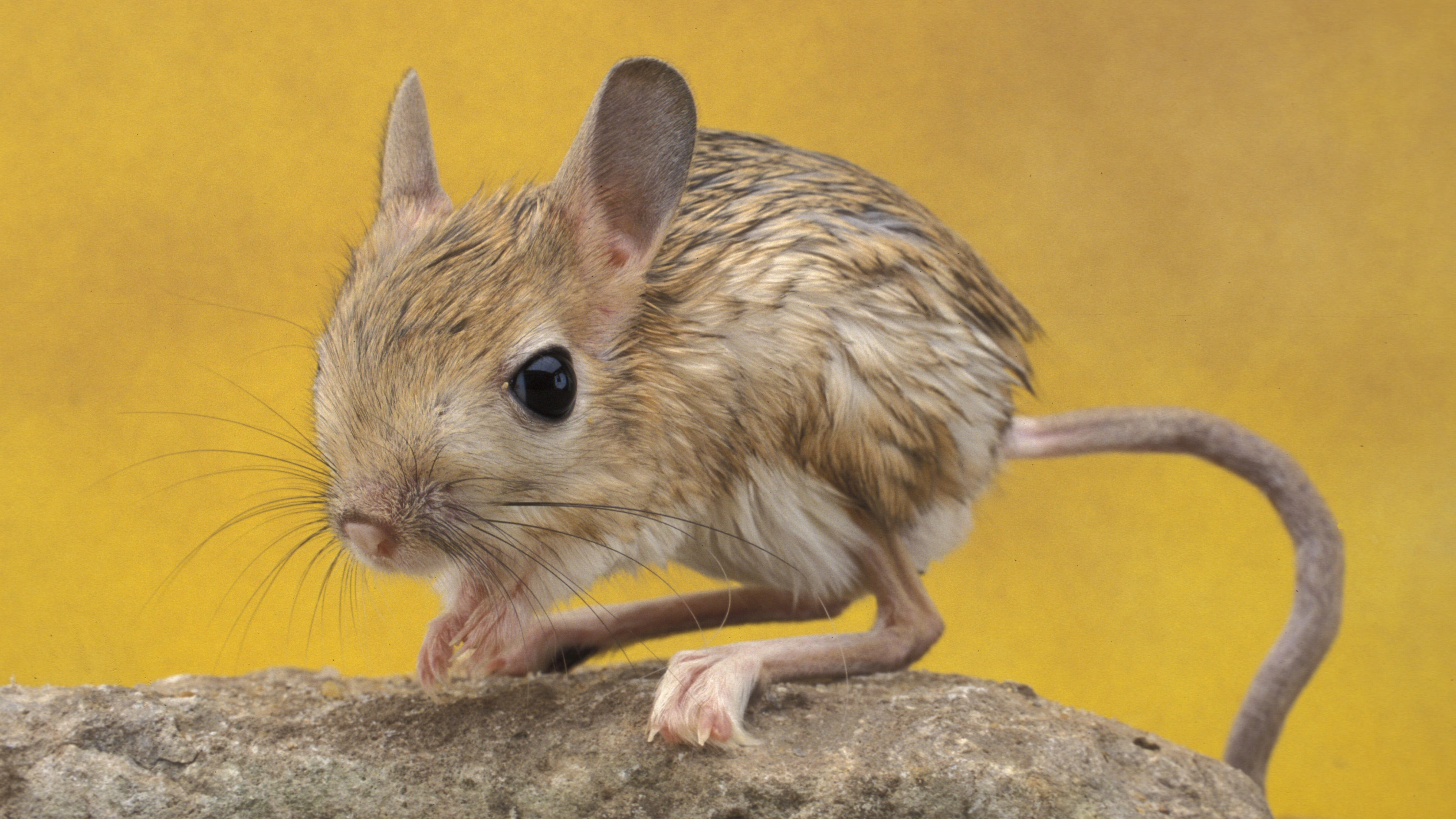
The adorable baluchistan pygmy jerboa is a species of rodent endemic to Pakistan. Measuring just two inches in length, it ties for the title of the smallest rodent in the world with the African pygmy mouse. They have fine fur the color of sand which helps them to blend into the sand dunes and hot desert plains where they live. Because they only have three toes, they move around in hops and use their long tails to help them balance.
18. Maned wolf
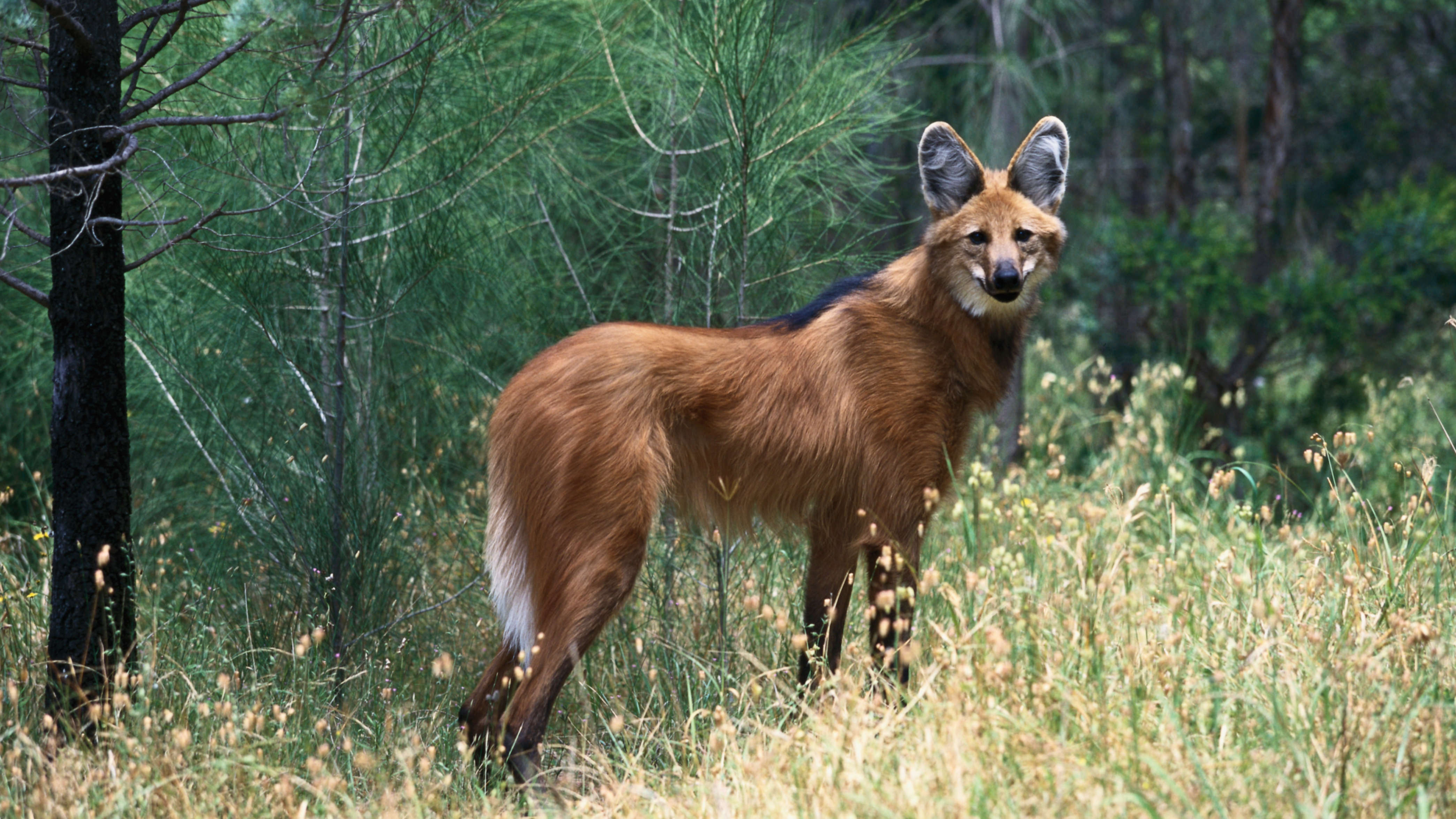
Hailing from South America, the maned wolf looks more like a long-legged fox than a wolf and yet it's not closely related to either and is instead a distinct species in its own right. Standing at three feet tall and weighing around 50 pounds, they inhabit wet and dry forests, savannahs, marshes, wetlands, and grasslands, and in human care, they have a lifespan of between seven and 15 years. Primarily solitary hunters, the maned wolf is an omnivore who likes to gorge on fruits and vegetables. They live in monogamous pairs with each pair having a territory of roughly 10 square miles.
19. Glass frog
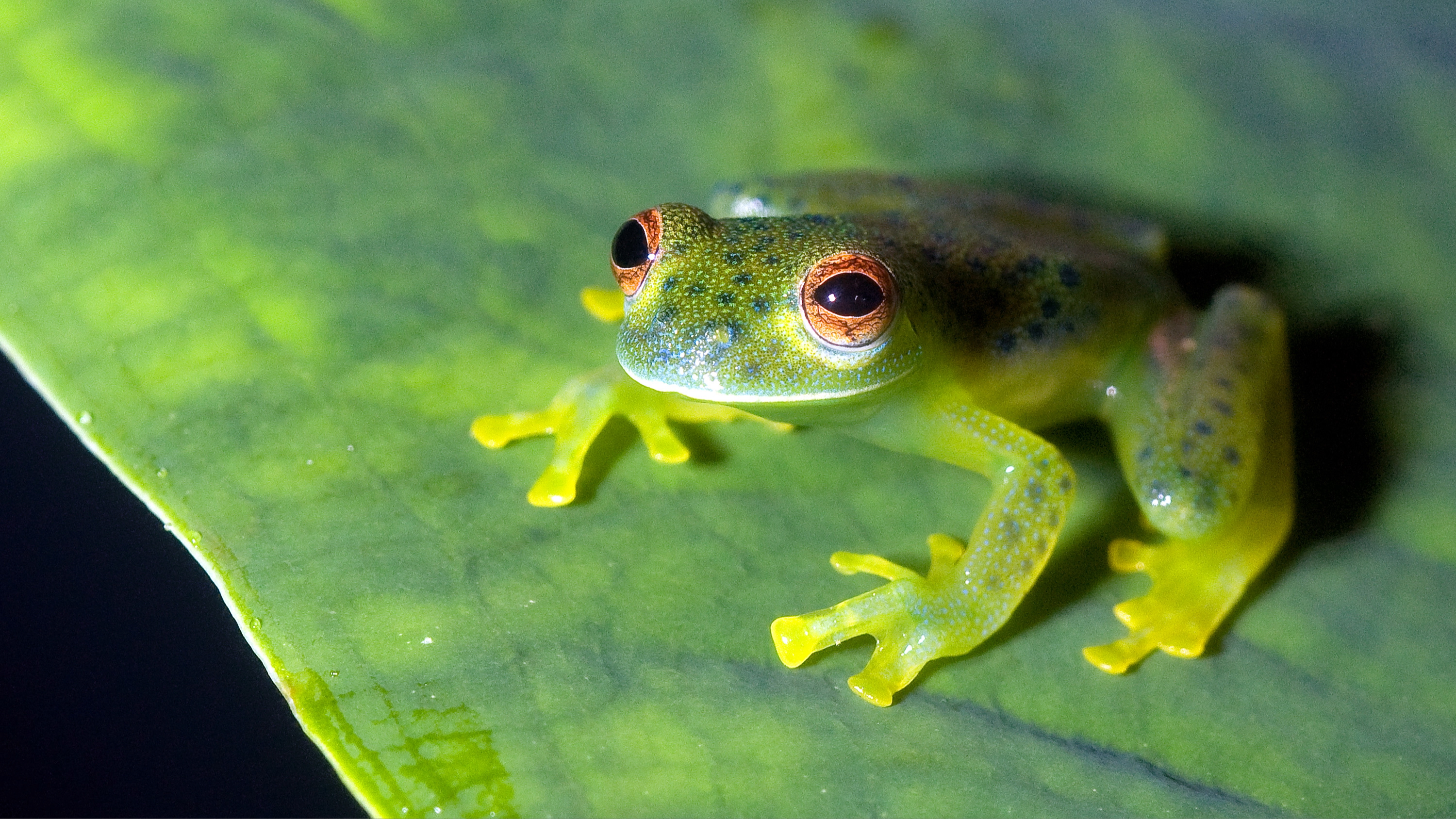
Native to the Central American rainforests, the glass frog lives mainly in trees and feeds on small insects. Their translucent skin makes them a truly striking creature to look at – you can literally see their heart beating and watch food passing through their digestive system!
While this is a very cool sight to behold, it's not a feature that's there to wow us humans but is instead an adaptation that helps them blend into their surroundings. The glass frog is nocturnal and during mating season, they lay clutches of 18 to 30 eggs on the undersides of leaves and branches near running water. Males stand guard over the eggs until they hatch and once they do, the tadpoles drop into the water where they'll go on to become frogs.
20. Fossa
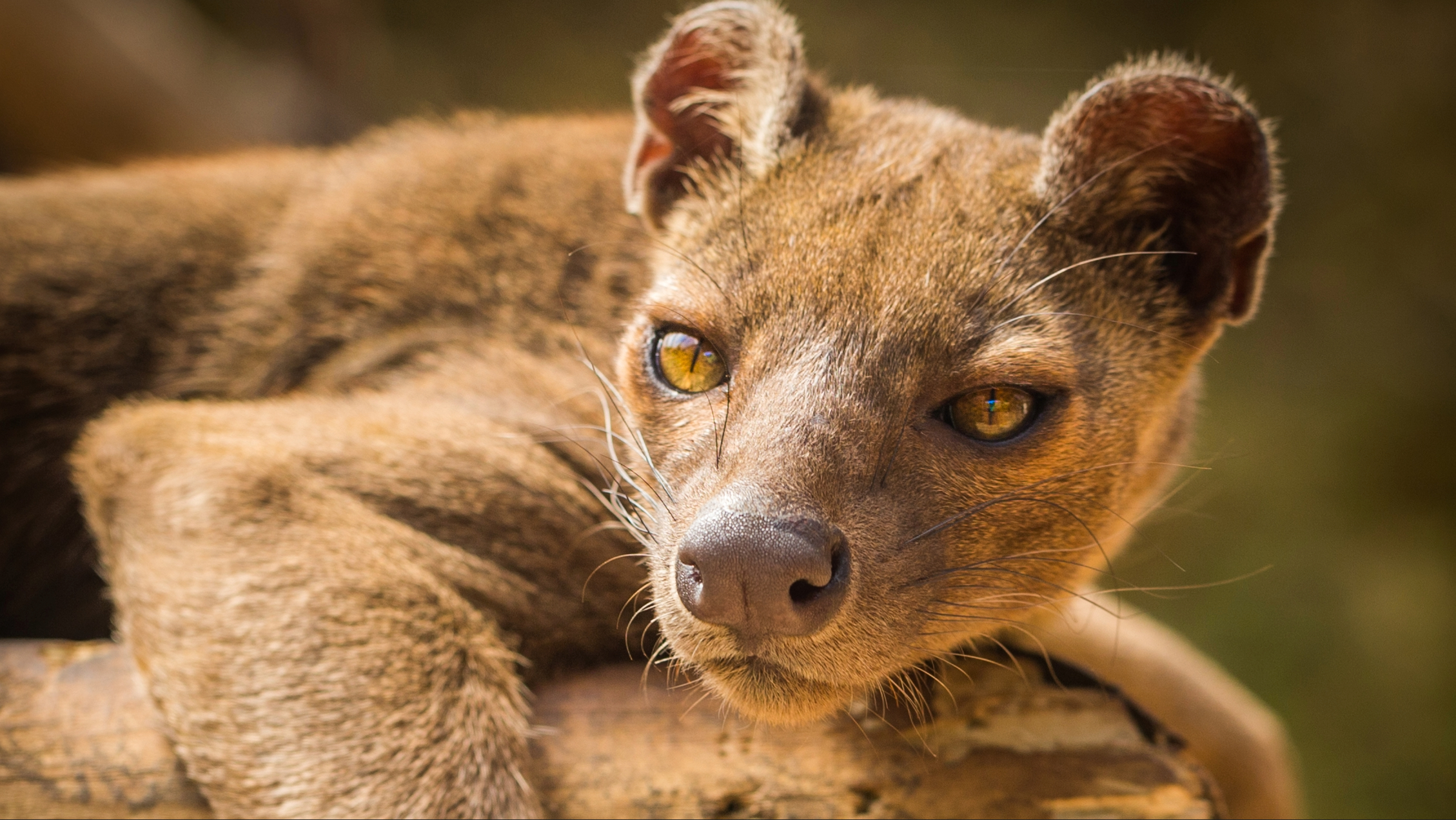
A slender, long-tailed cat from Madagascar, the fossa is an intelligent and agile animal that feeds on anything from lemurs to wild pigs. With its retractable claws and sharp teeth, it is quite the fearsome predator and it uses its long tail to help it move amongst the tree branches. An elusive and solitary creature, fossa's only come together during mating season and most females will have a single litter each year consisting of two to four pups who will remain with their mother until around five months of age.
21. Tufted deer
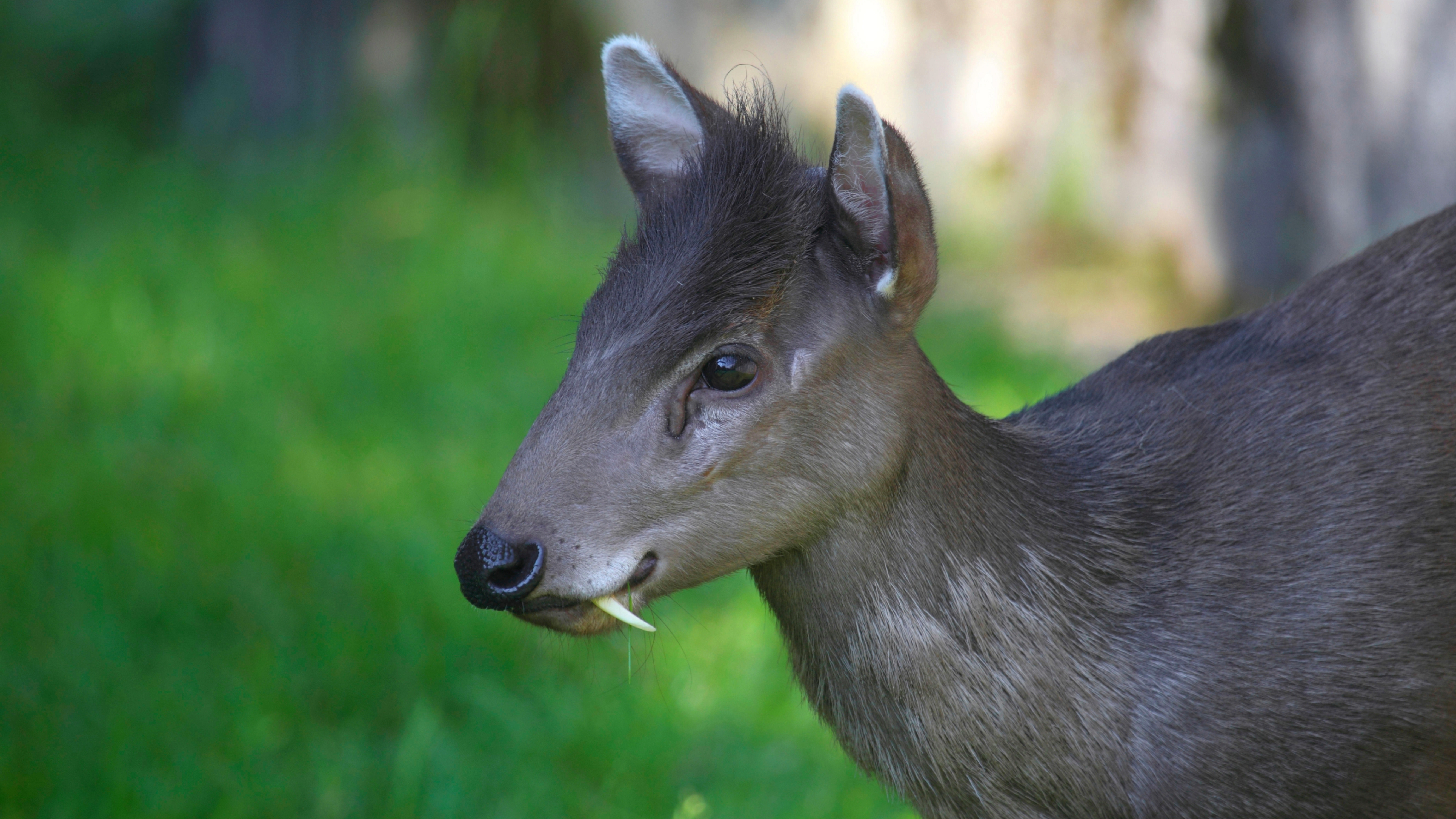
A small species of deer with an adorable head tuft and rather impressive fang-like canines, the tufted deer lives in the high valley jungles and mountain forests of Myanmar and southern and central China.
Most active at dawn and dusk, they are shy creatures who may form a bonded pair or live a solitary life. Mating seasons occur between September and December and males will bark to attract females. Once pregnant, females carry one to two fawns for six months and care for their young for another six months until they're able to live independently.
22. Amazon River Dolphin
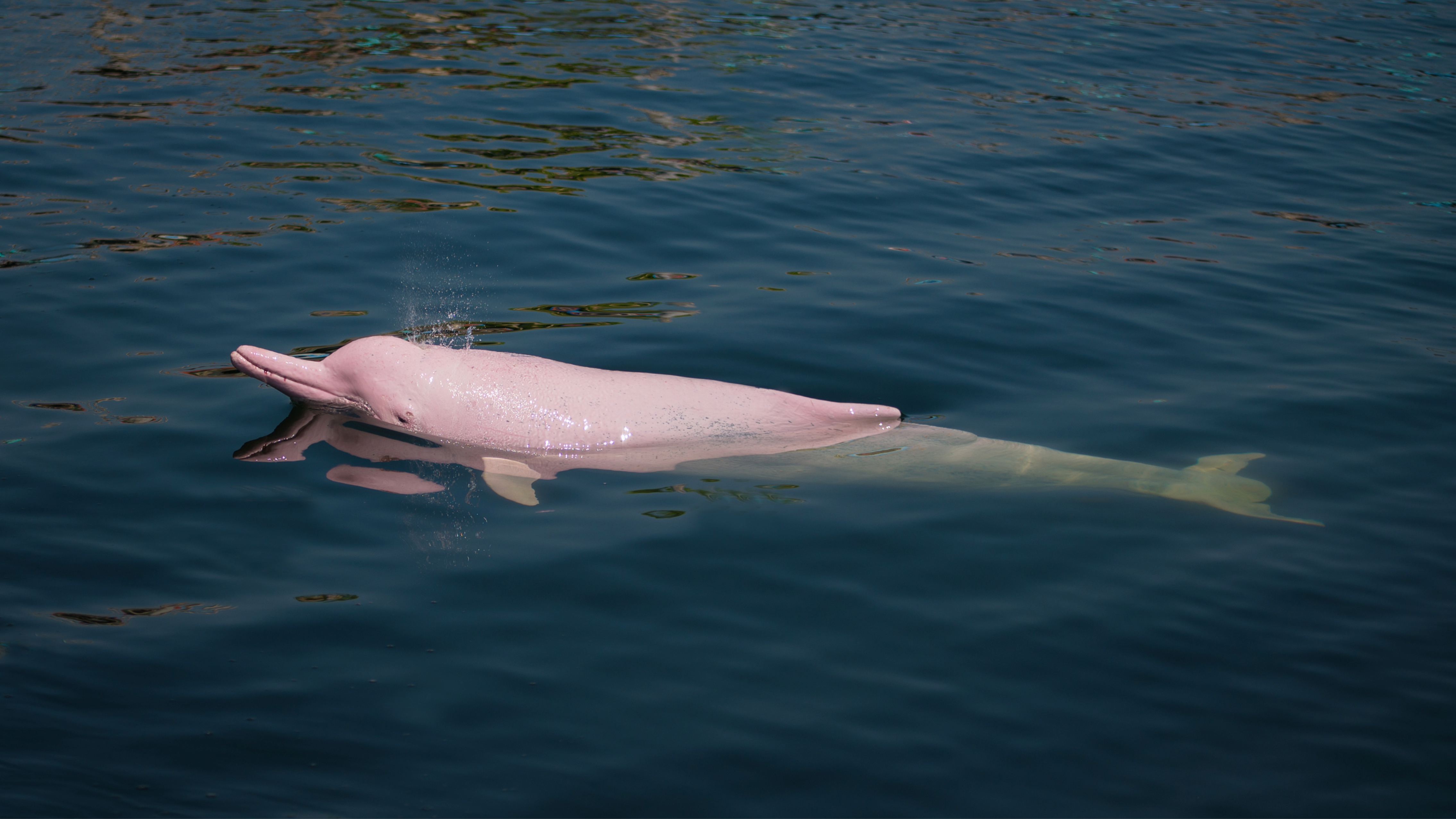
The Amazon River Dolphin, also known as the pink dolphin, lives solely in freshwater and can be found in the Amazon and Orinoco river basins in parts of South America. Measuring up to nine feet and weighing up to 352 pounds, they are the largest species of river dolphin.
Born grey, the Amazon River Dolphin turns pink as it matures with males having a stronger pink hue than females. This is likely due to the fact that males can be aggressive with other males and their wounds get covered in pink scar tissue which eventually replaces all the grey.
23. Lilac-breasted roller
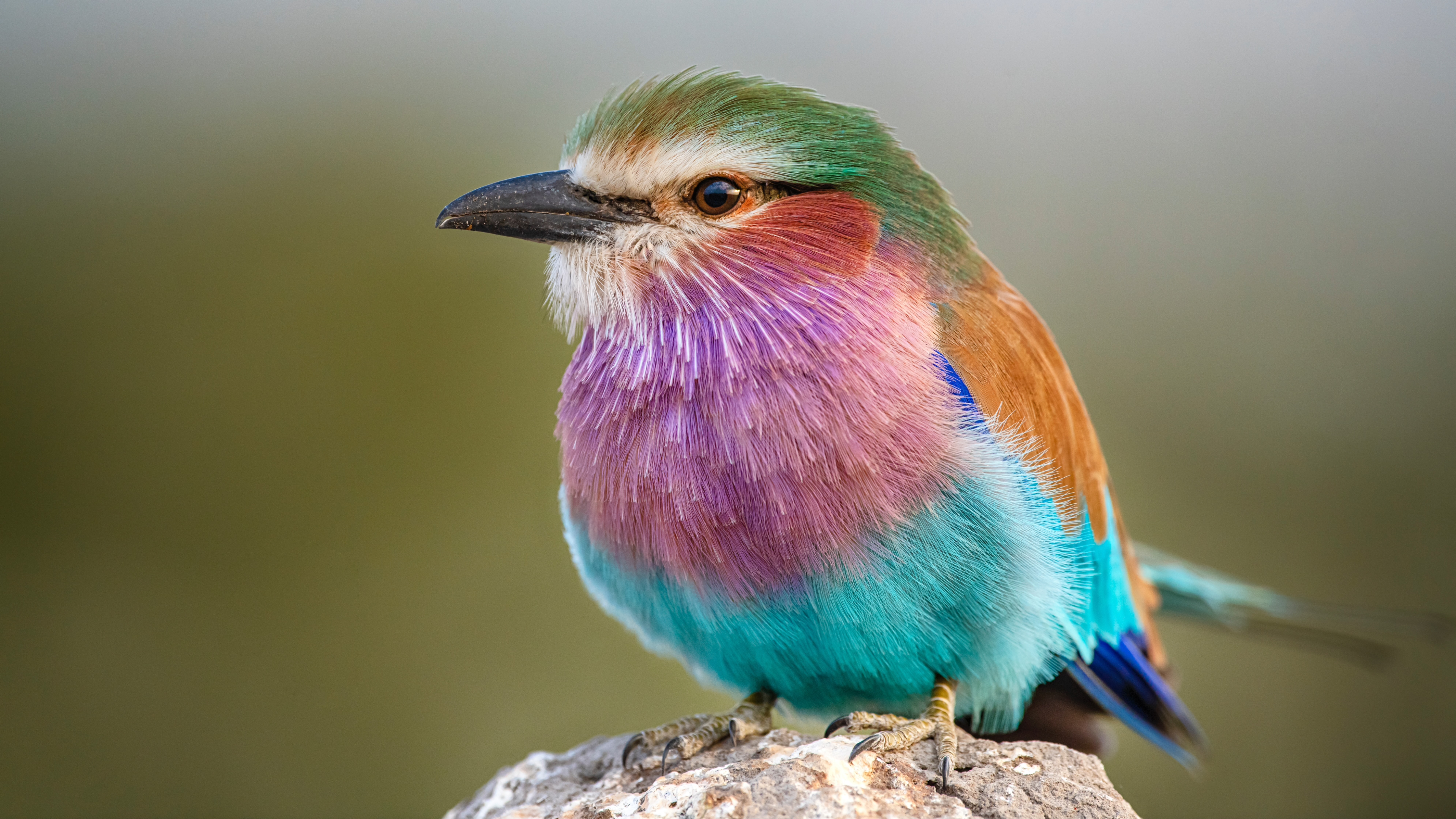
When it comes to colorful birds, you'd be hard-pressed to find one brighter than the lilac-breasted roller. This gorgeous creature lives in southern and Eastern Africa and sports feathers that look like a true work of art. Feeding on grasshoppers, beetles and occasionally larger prey like lizards and crabs, the lilac-breasted roller gets part of their name from their impressive courtship ritual which sees them rolling or rocking while shallow diving and emitting loud, raucous calls. They live in pairs or small groups and are known for being territorial.
24. Axolotl
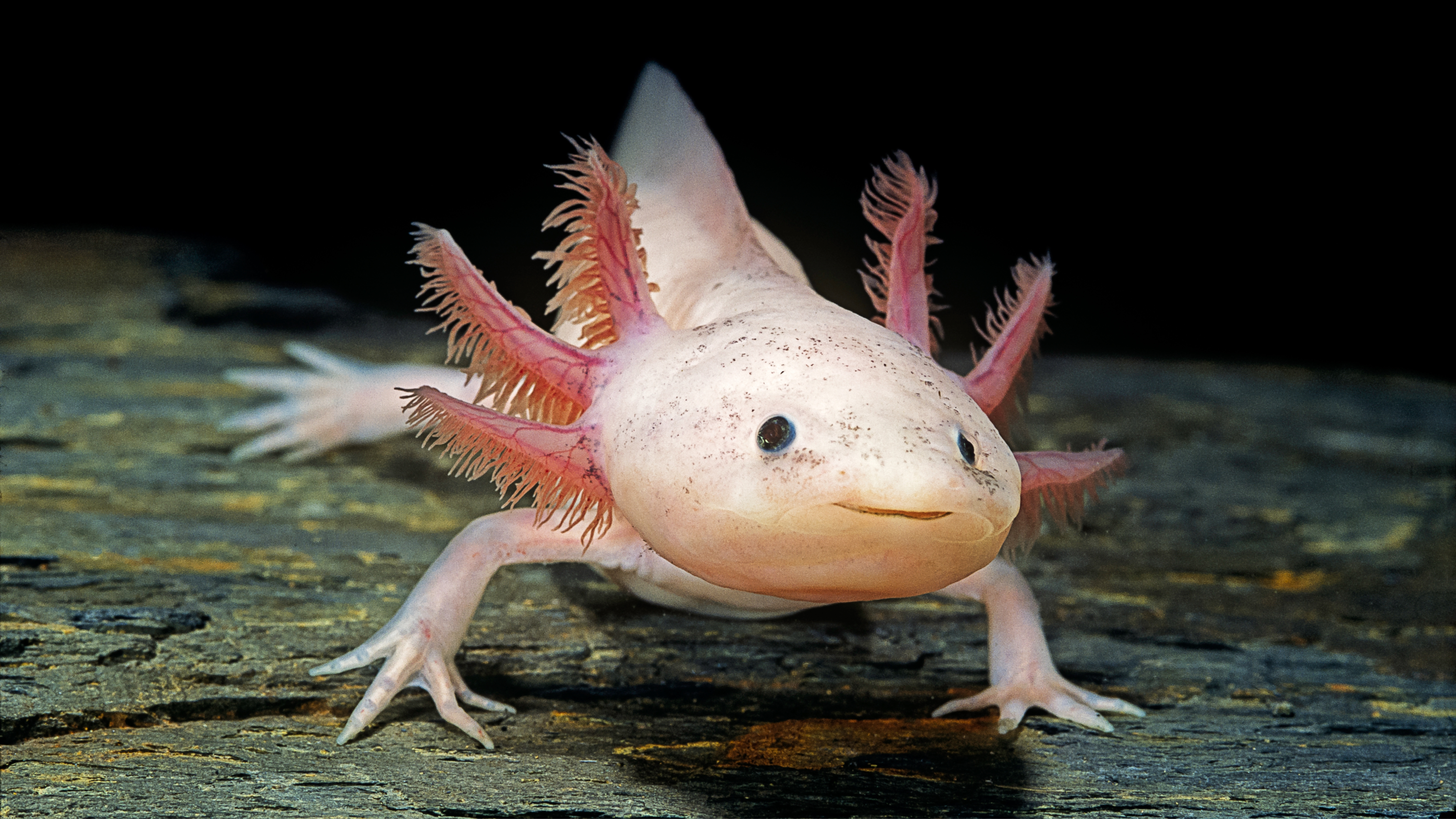
The axolotl is a Mexican amphibian that lives in lakes and canals in the southern part of Mexico City. They're classified as being critically endangered due to habitat degradation, pollution, and the pet trade, however, while they're nearly extinct in the wild great efforts have been made in recent years to build the population up and they are currently thriving in captivity. While most axolotls are black or mottled brown, some have white skin and pink gills and they have a rather impressive skill – they can regrow body parts, including their heart, spine, and brain.
25. Narwhal
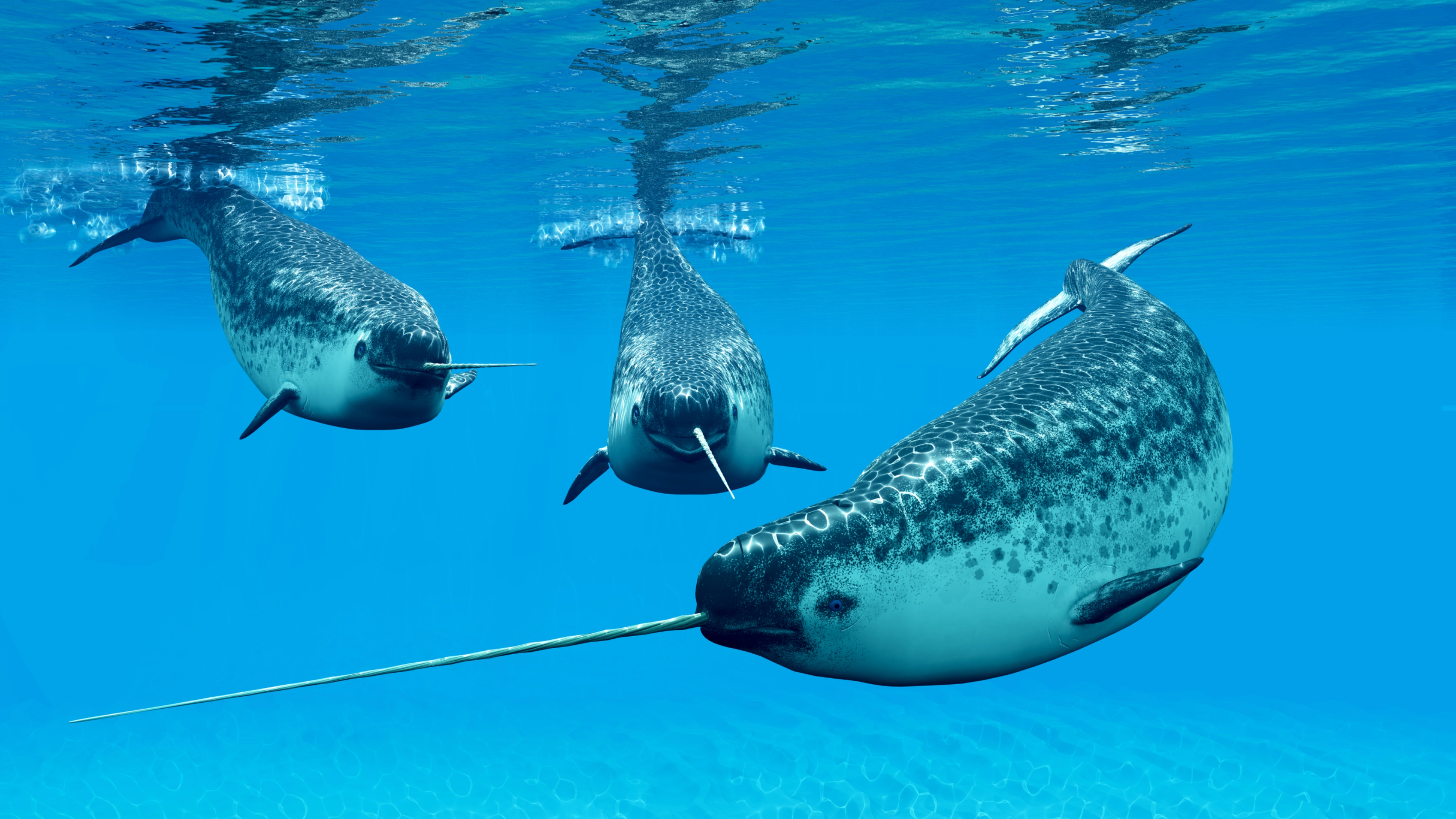
Lovingly referred to as the unicorn of the sea, the narwhal is a species of toothed whale native to Arctic coastal waters. Weighing an impressive 1.5 tons and reaching lengths of up to 20 feet, the narwhal has an ivory tusk which in males can be as long as 10 feet. Narwhals travel in groups of around 15 to 20 and feast on fish, shrimp, and squid. They are not yet endangered but they are classified as near threatened, largely due to the fact that the Inuit people hunt them for their skin – an important source of vitamin C in their Arctic diet.
26. Shoebill

The shoebill is a long-legged wading bird that's sometimes also referred to as the whale-headed stork. Reaching up to five feet tall and with an eight-foot wing span, they have an impressive average lifespan of 35 years in the wild. Given the name shoebill because of the way their bill resembles a Dutch clog, this fascinating bird lives in the freshwater marshes and swamps of East Africa. It's estimated that there are only between 3,300 and 5,300 shoebills left in the world and their habitat is under major threat as more of their land is cleared for pasture.
27. Hummingbird hawk moth
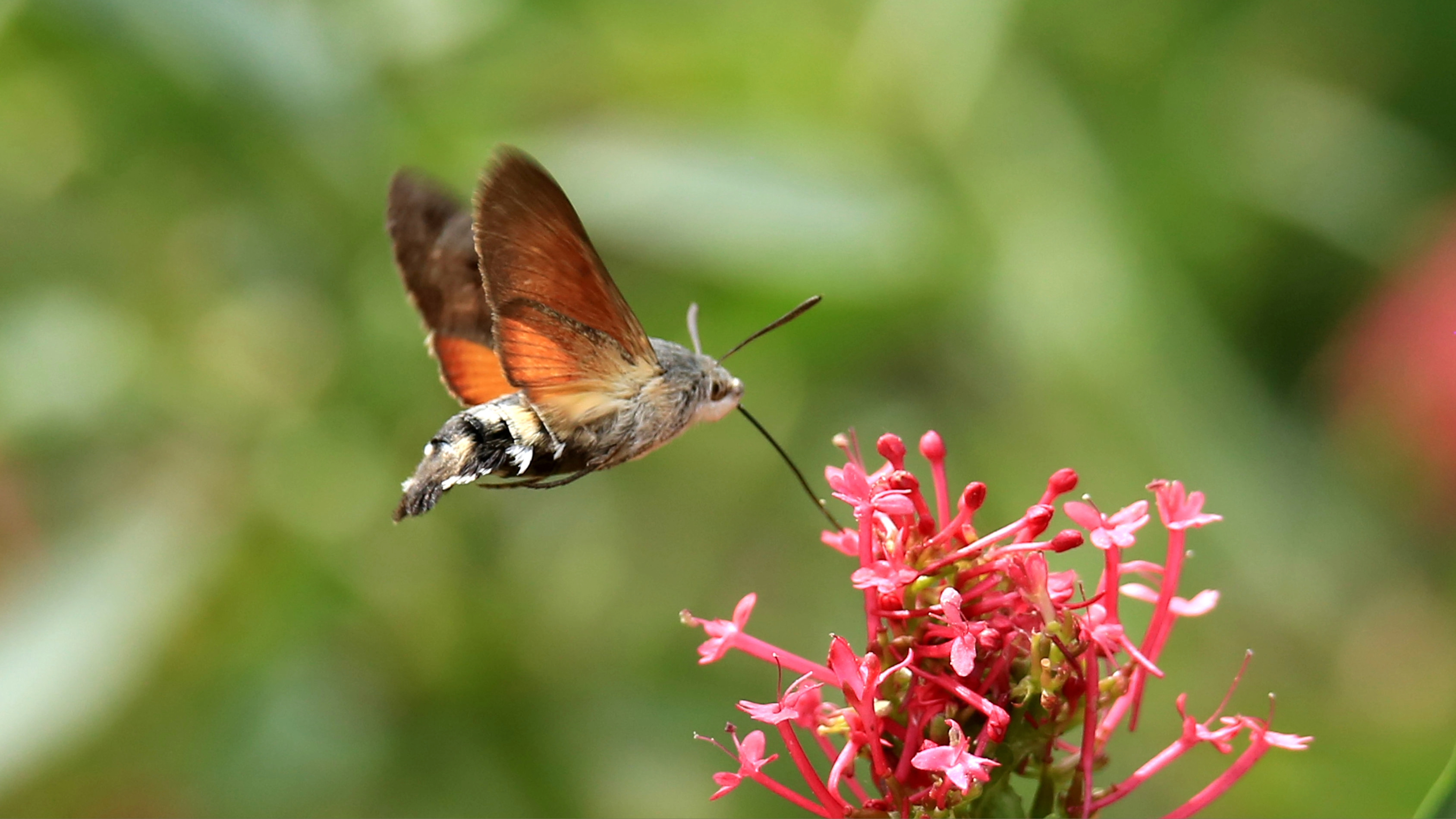
Named because of how similar it looks to a hummingbird, this moth hovers over flowers just like its namesake and uses its long proboscis to feed. Native to Southern Europe, it migrates to the United Kingdom during the summer where it can be spotted in gardens feeding on honeysuckle and red valerian.
28. Quokka
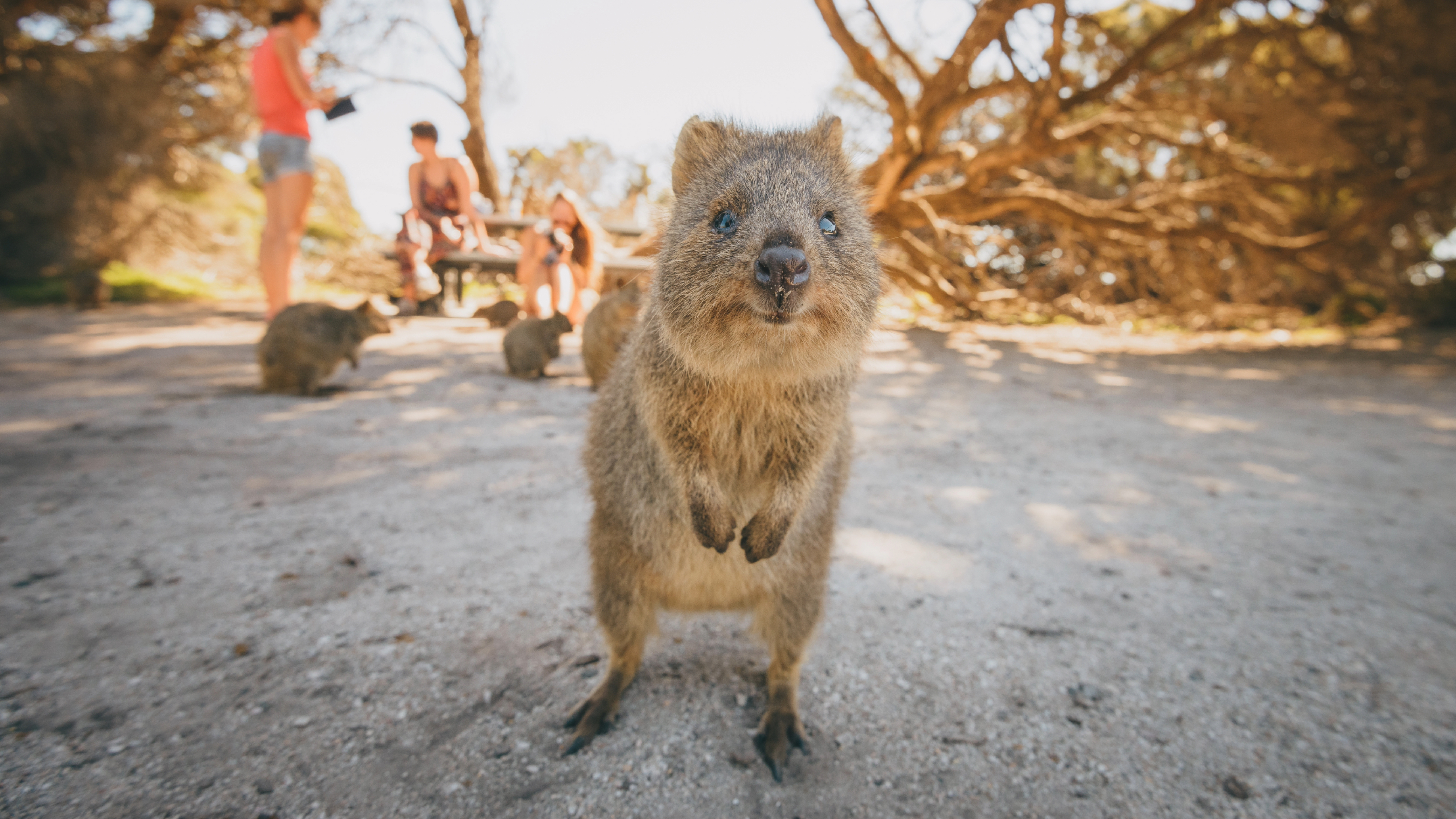
The utterly adorable and charming quokka is a fuzzy, friendly animal that's native to Australia. A super-sweet and smiley marsupial, they have long captured the attention of scientists who love observing their weird and wonderful behavior. The quokka may be related to the kangaroo and wallaby, but they act like several different animals all rolled into one. They reach for leaves in the same way a koala does, chew like giraffes, hop about like a rabbit, and often nap with their heads upside down like bats.
29. Sri Lanka Frogmouth
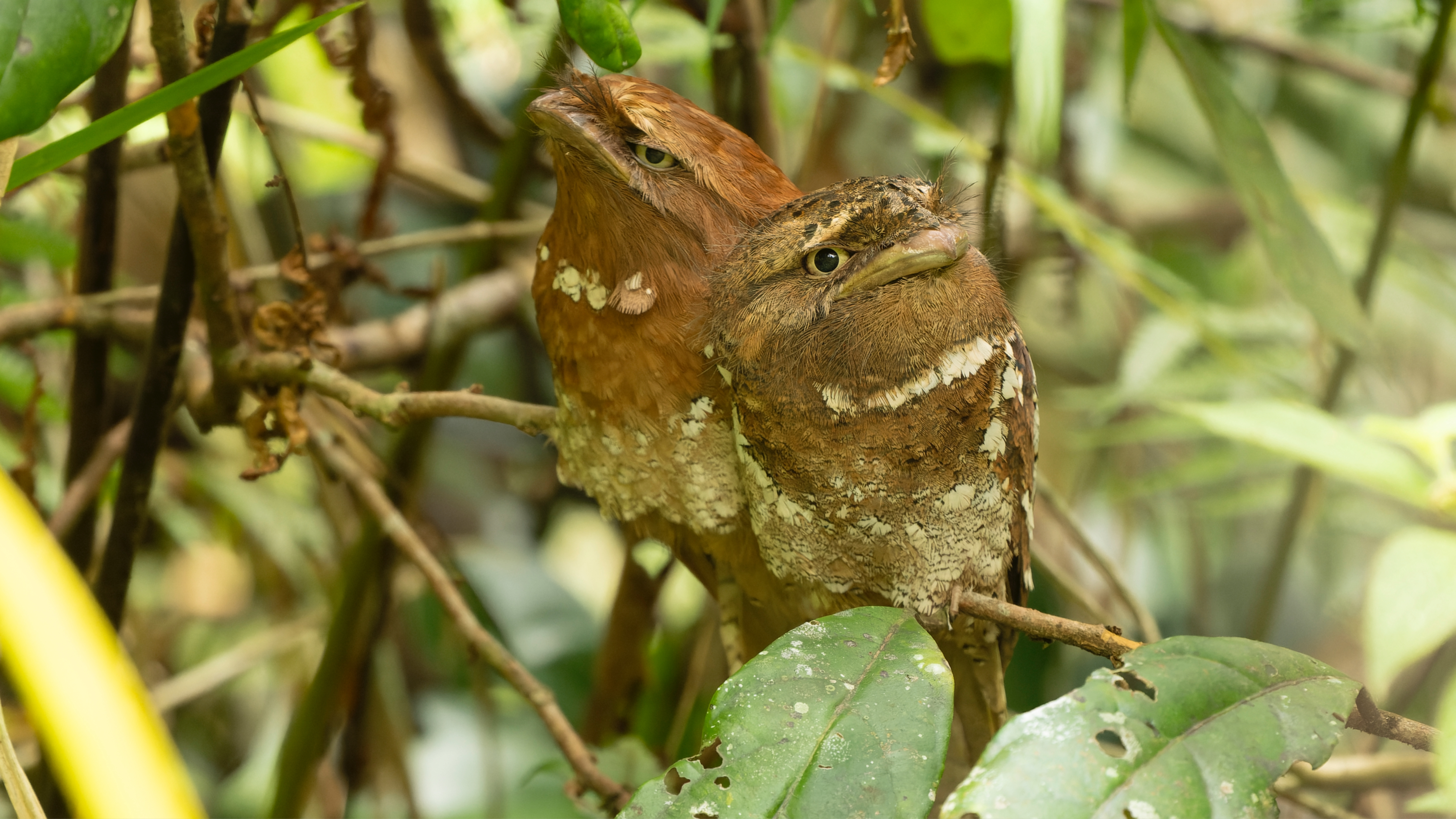
Native to southern India and Sri Lanka, the frogmouth is a bird that looks like a cross between an owl and a nightjar. A secretive bird that inhabits the shrubs and trees between the forest floor and forest canopy, the Sri Lanka Frogmouth vocalizes through pleasant coos or rather grating scratchy screams depending on what it is it's trying to communicate! Nocturnal and rarely seen during the day, it comes out at night to feast on insects.
30. Myanmar Snub-Nosed Monkey
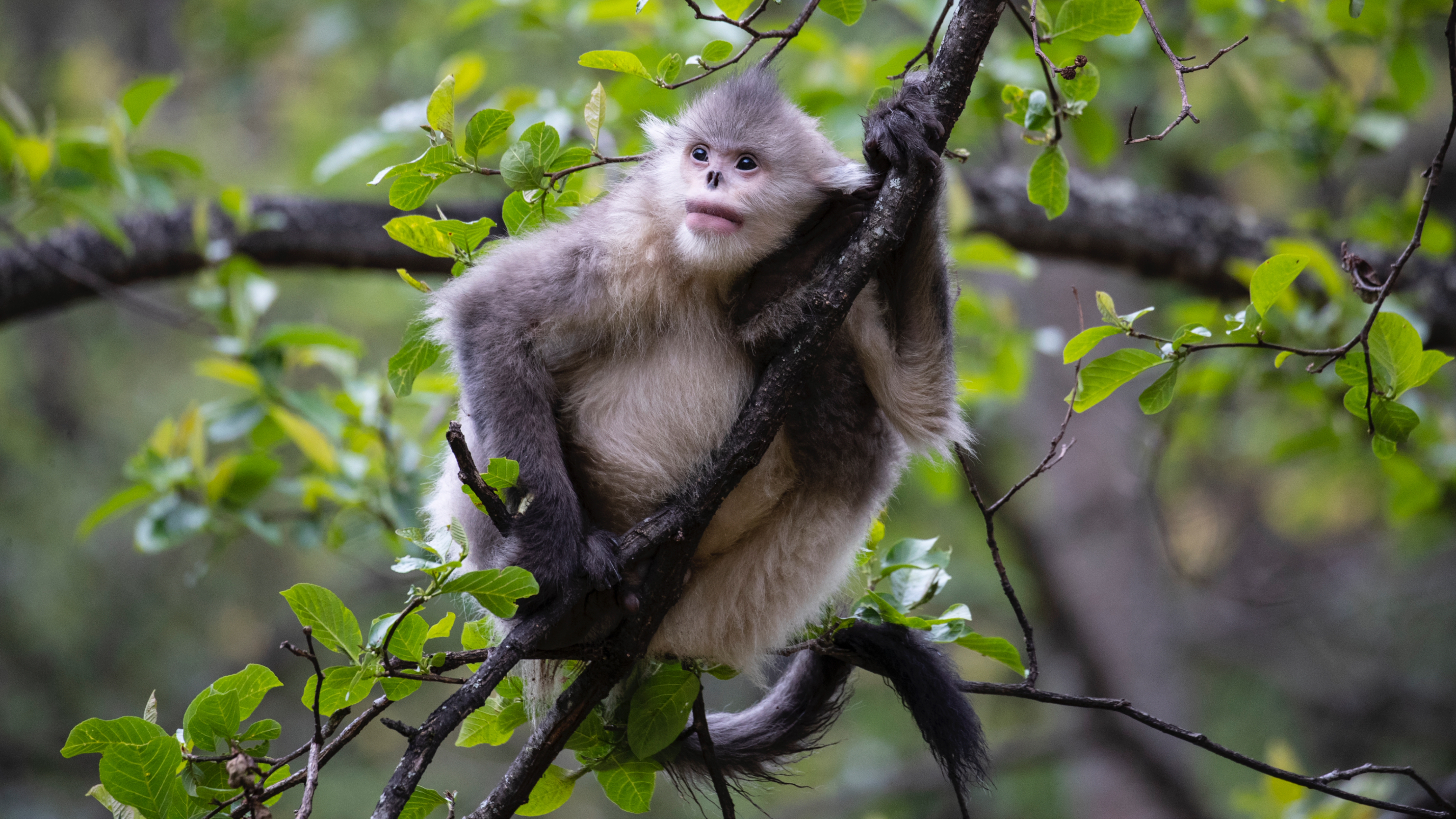
The Myanmar Snub-Nosed Monkey lives in the high mountains on the border of Myanmar and China and is closely related to the black snub-nosed monkey. Identified as a distinct species in 2011, it is estimated that there are only 400 of them in existence making them close to extinction.
Measuring around 22 inches and weighing up to 37 pounds, they have an average lifespan of around 23 years. Males may choose to live alone, in bachelor groups or as the dominant male in a largely female family. When baby Myanmar Snub-Nosed monkeys are born, they have blue faces and white fur that gradually changes color as they mature.
31. Dugong
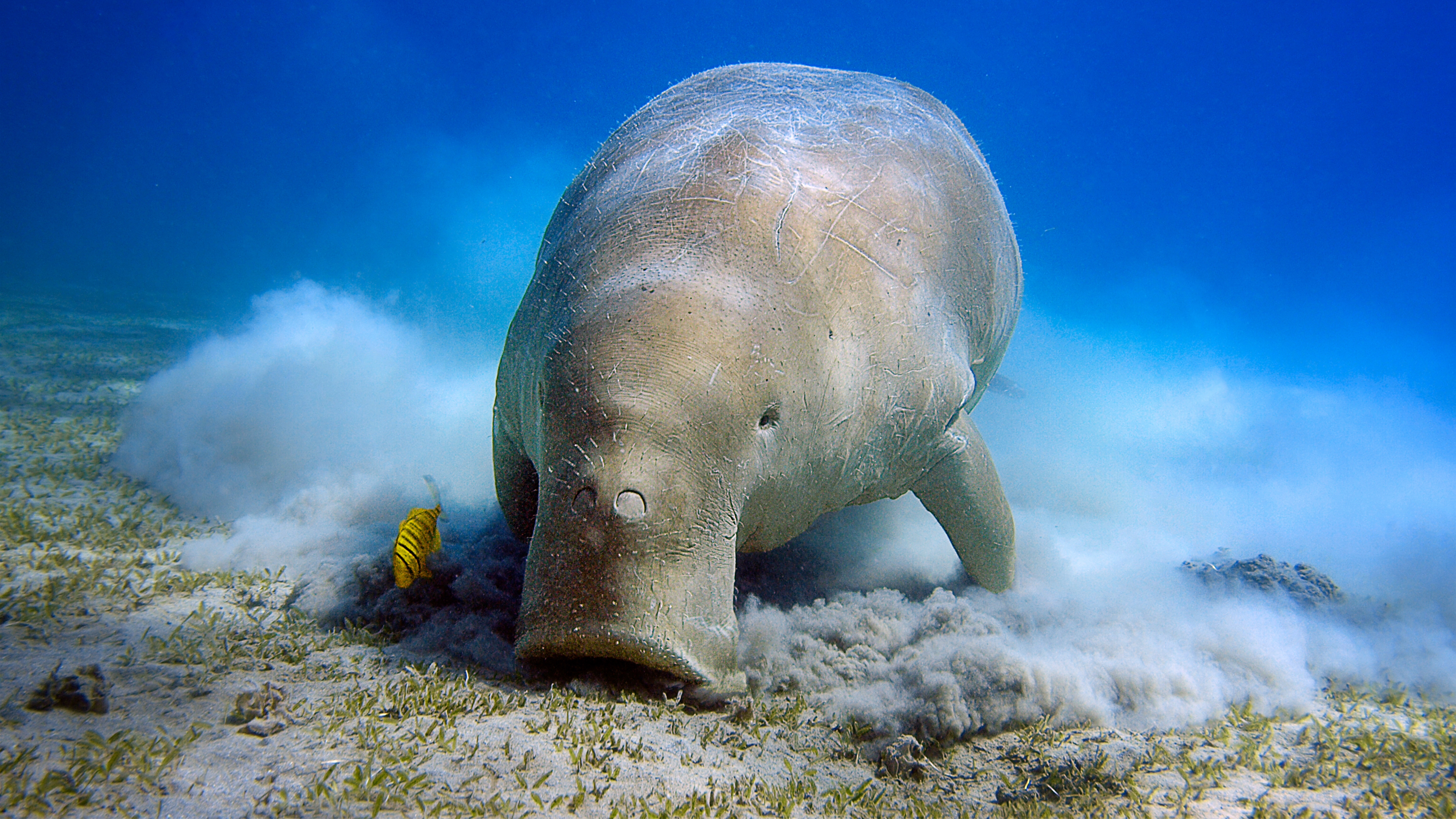
Related to manatees, dugongs are medium-sized marine mammals that can be found in warm coastal waters from East Africa to Australia. Dugongs graze on underwater grasses, using their sensitive snouts to root around for them. Surfacing every six minutes to draw breath, dugongs largely live alone or in pairs, although they can sometimes be seen in large herds. Weighing up to 1,100 pounds with a length of eight to 10 feet, they have a lifespan of around 70 years in the wild.
32. Sea pen

Both striking and soothing to look at, the sea pen looks like an underwater quill and comes in a variety of beautiful colors. A graceful creature that lives on the sea floor, the sea pen has been found as far north as the Gulf of Alaska and as far south as California. It has a height of up to 18 inches, feasts on drifting plankton, and will emit a bright, greenish light when stimulated.
Love learning about weird and unusual animals? Here are the best exotic pets you can own and the most expensive pets in the world. Or, check out these celebrities with exotic pets.

Kathryn is a freelance writer who has been a member of the PetsRadar family since it launched in 2020. Highly experienced in her field, she's driven by a desire to provide pet parents with accurate, timely, and informative content that enables them to provide their fur friends with everything they need to thrive.
Kathryn works closely with vets and trainers to ensure all articles offer the most up-to-date information across a range of pet-related fields, from insights into health and behavior issues to tips on products and training.
When she’s not busy crafting the perfect sentence for her features, buying guides and news pieces, she can be found hanging out with her family (which includes one super sassy cat and a kitten), drinking copious amounts of Jasmine tea and reading all the books.
She has written for a range of publications, including Fit&Well, Top Ten Reviews, LiveScience, Goodto, and Product Hunt.
